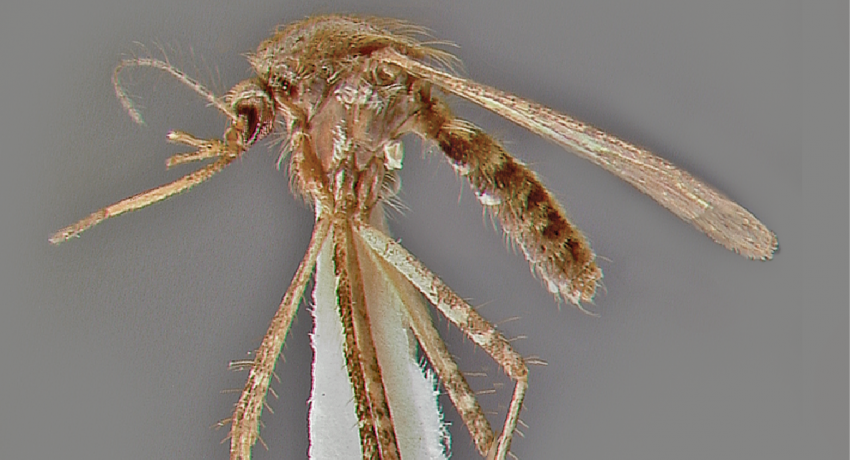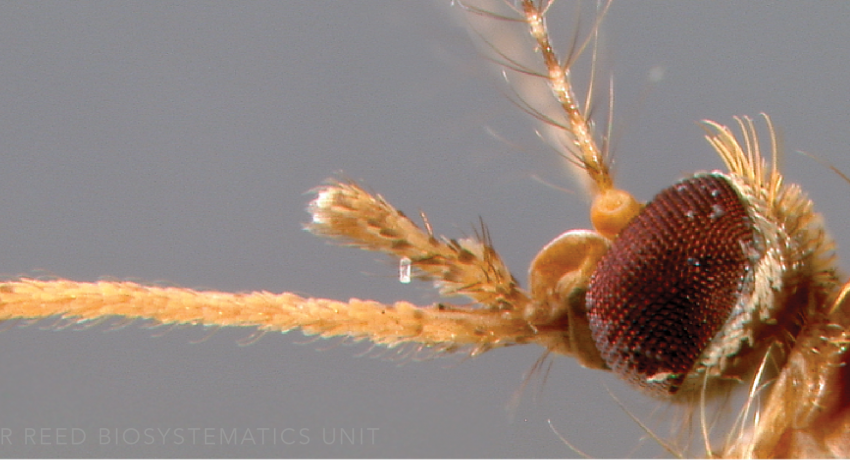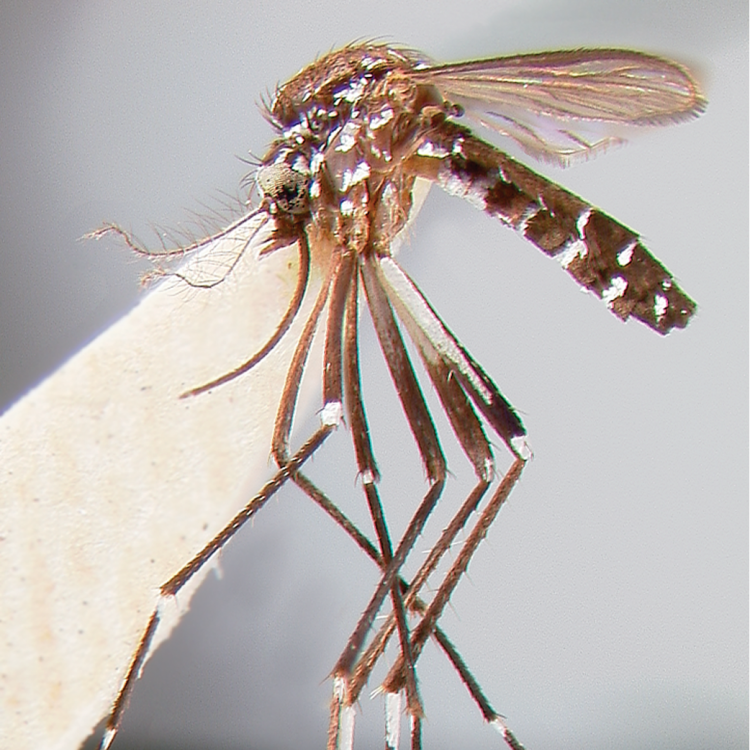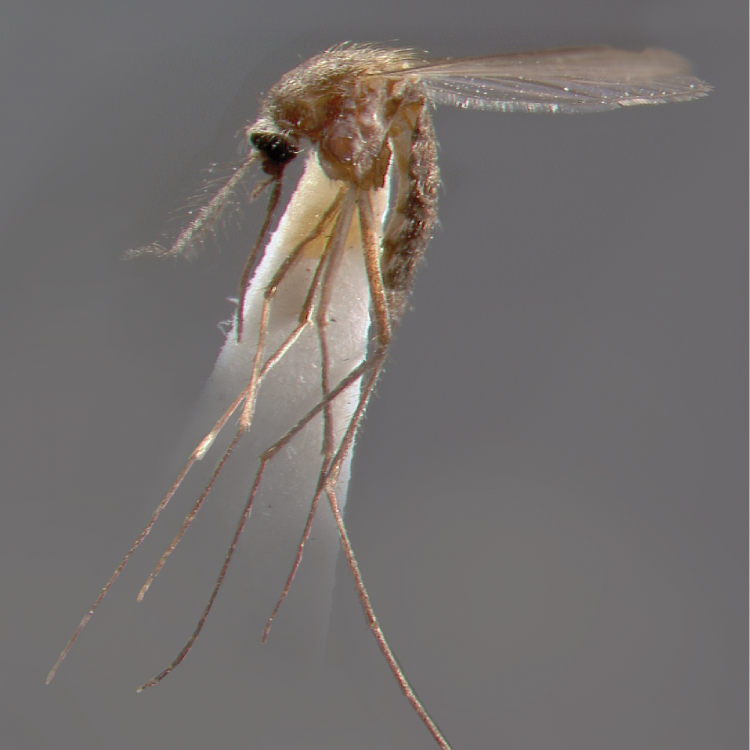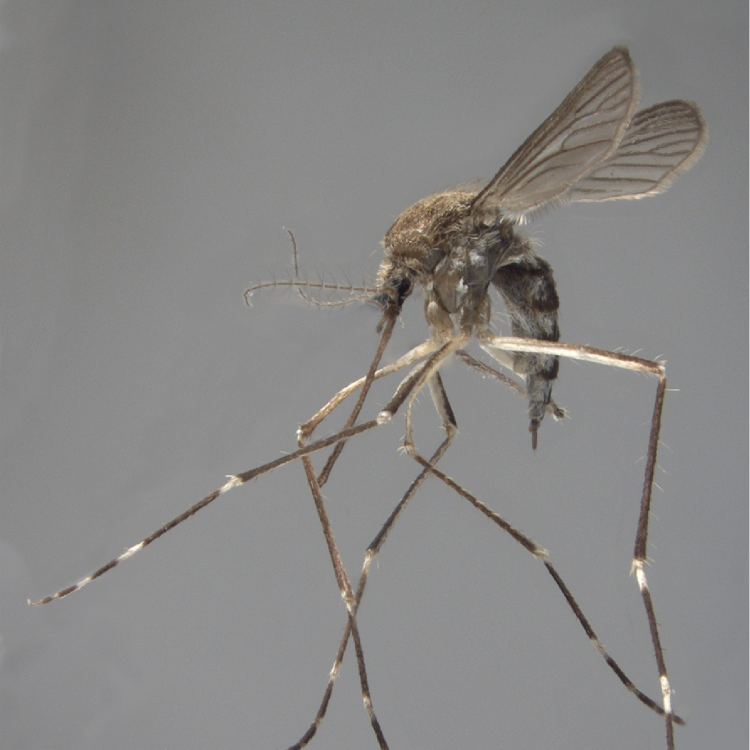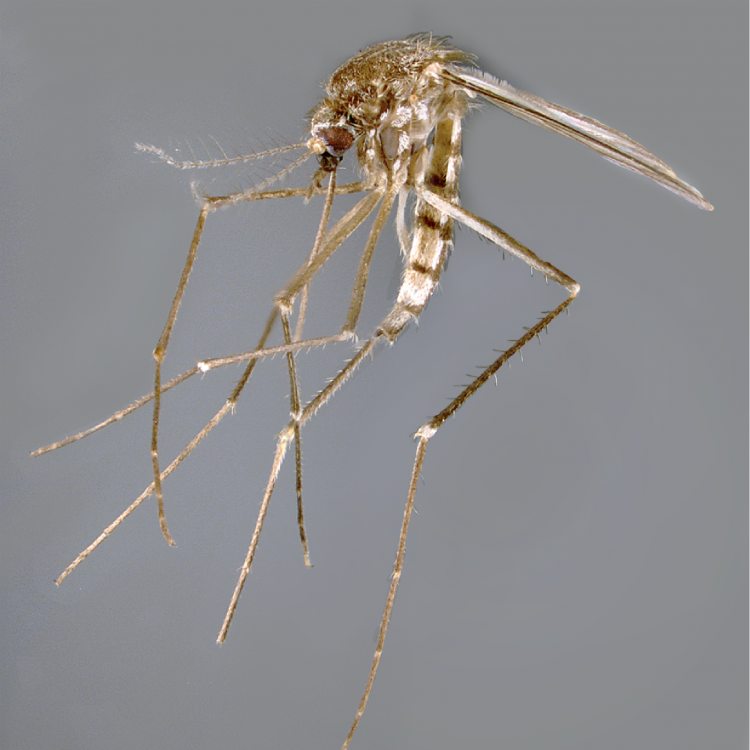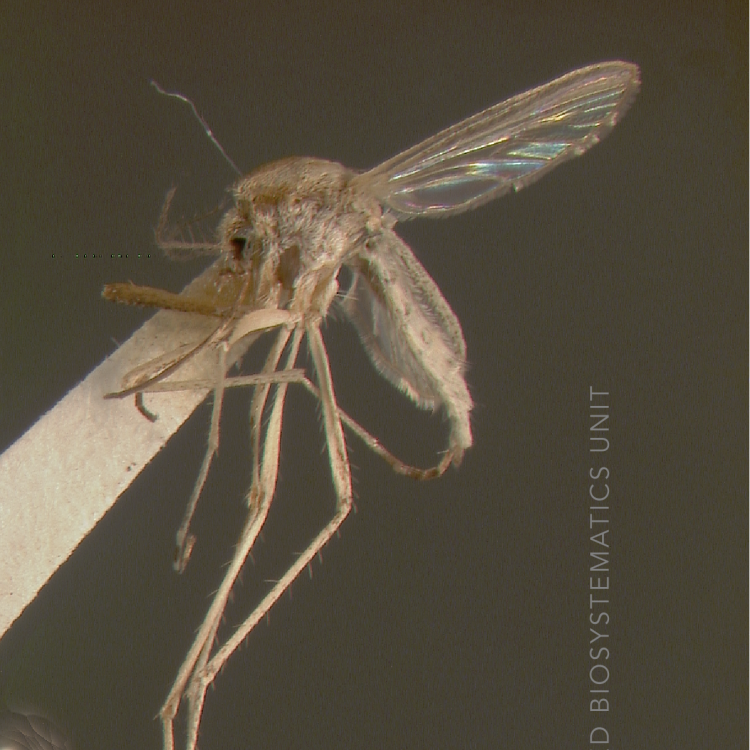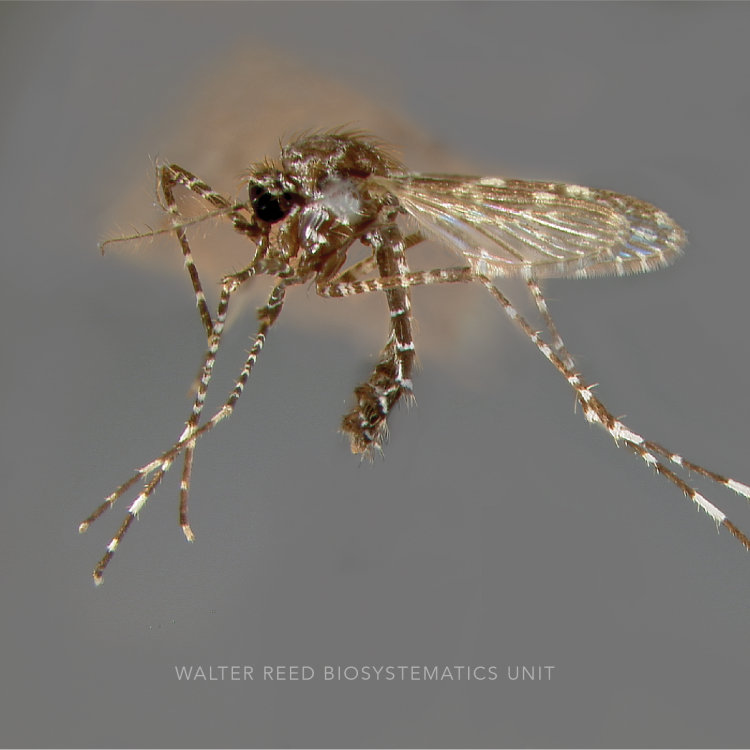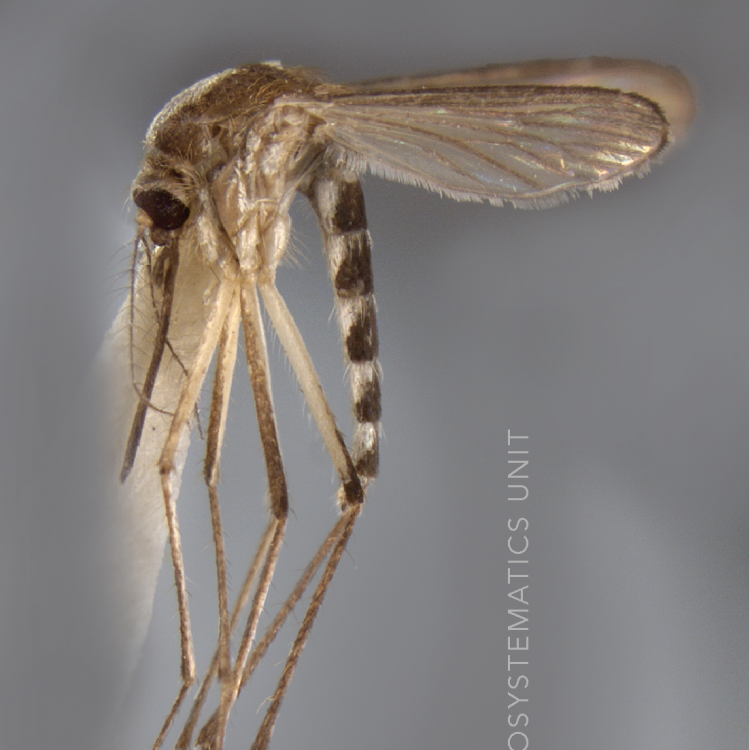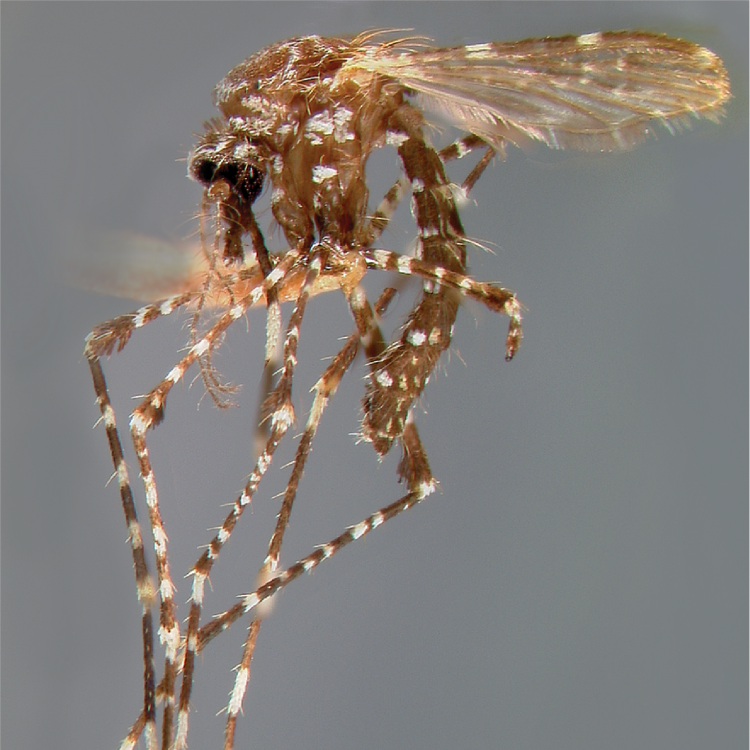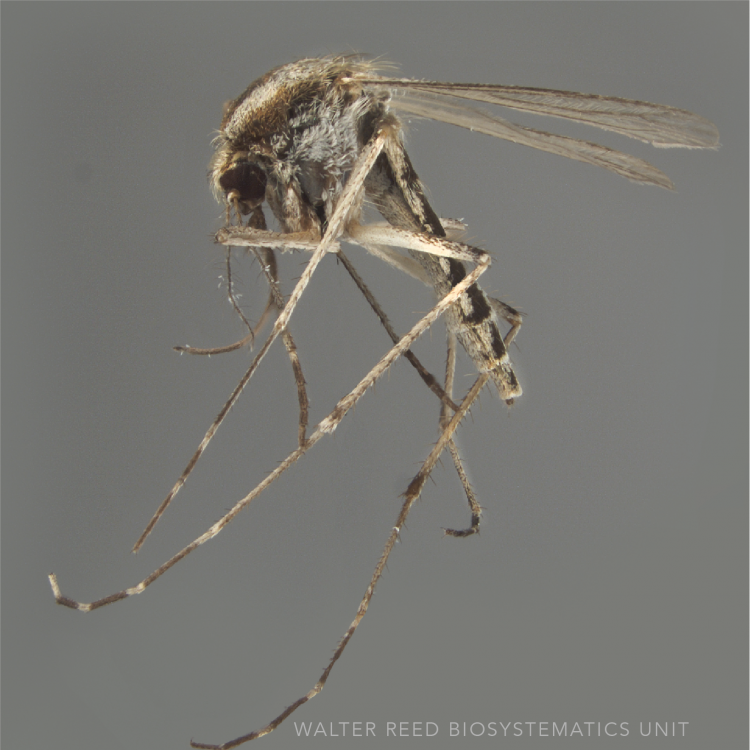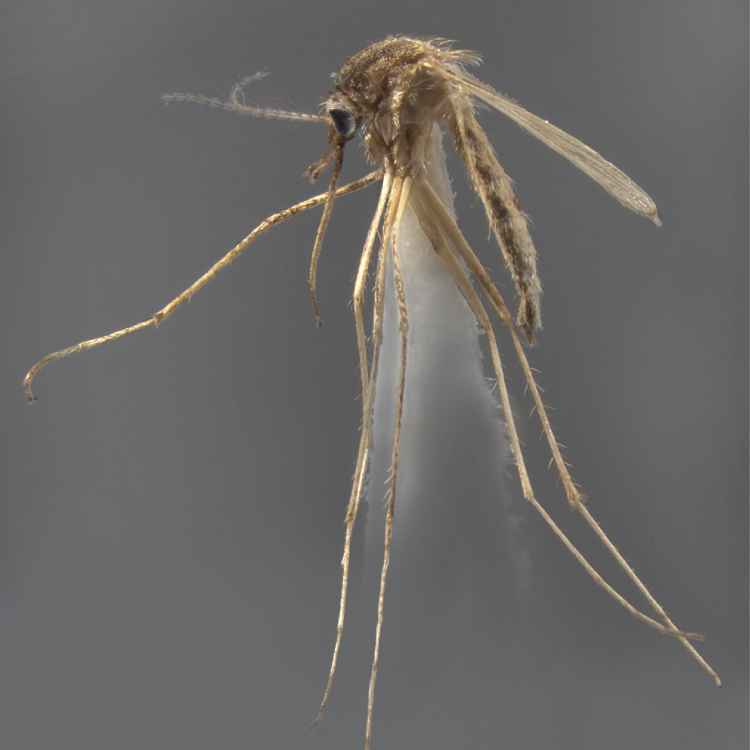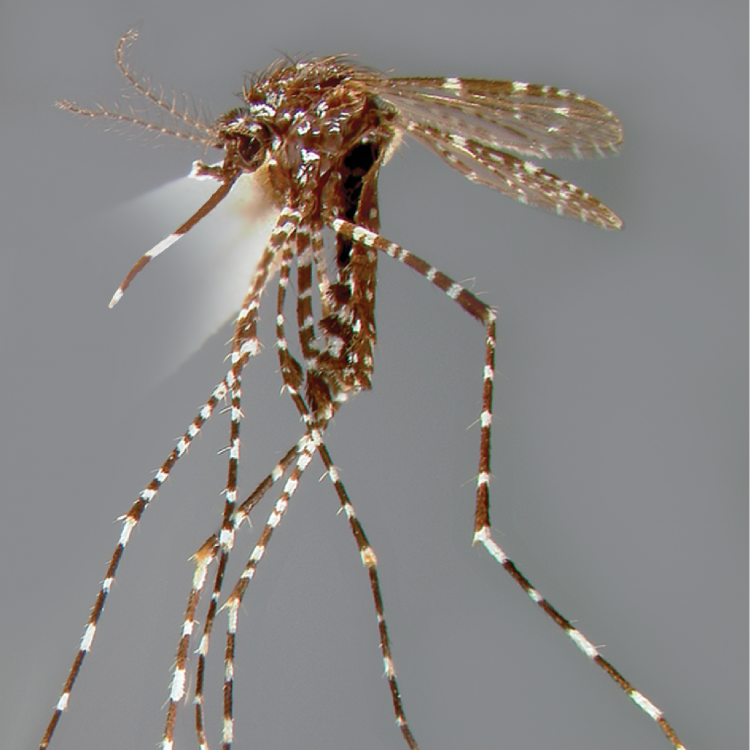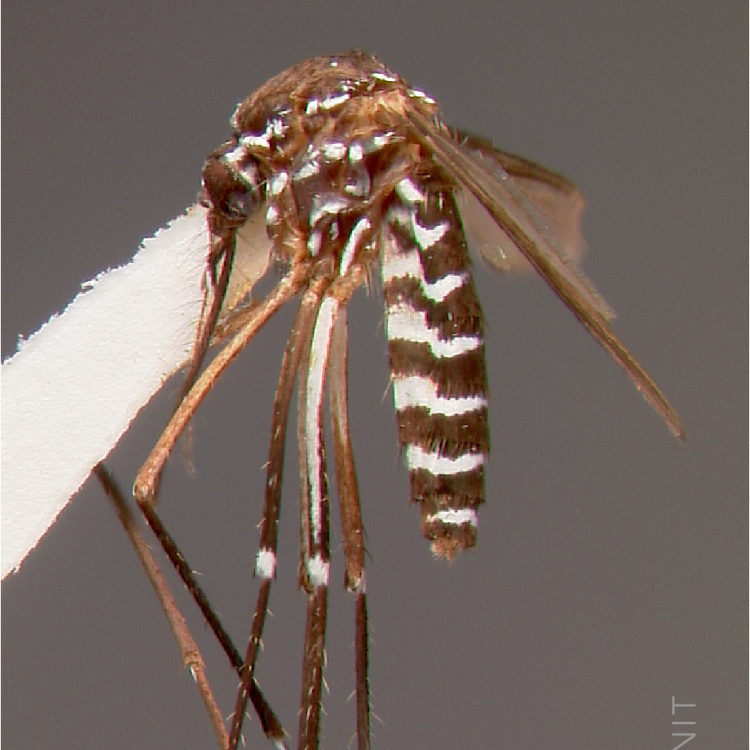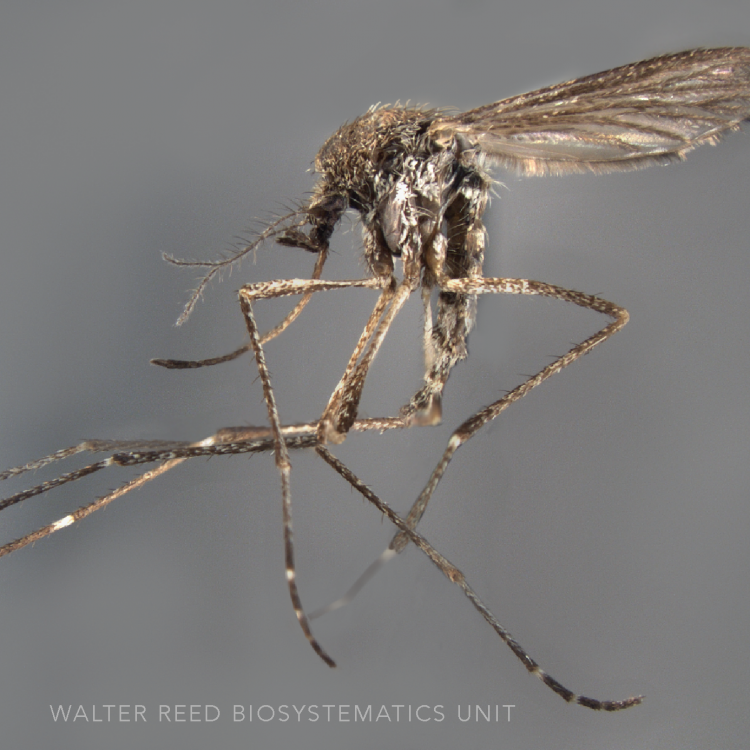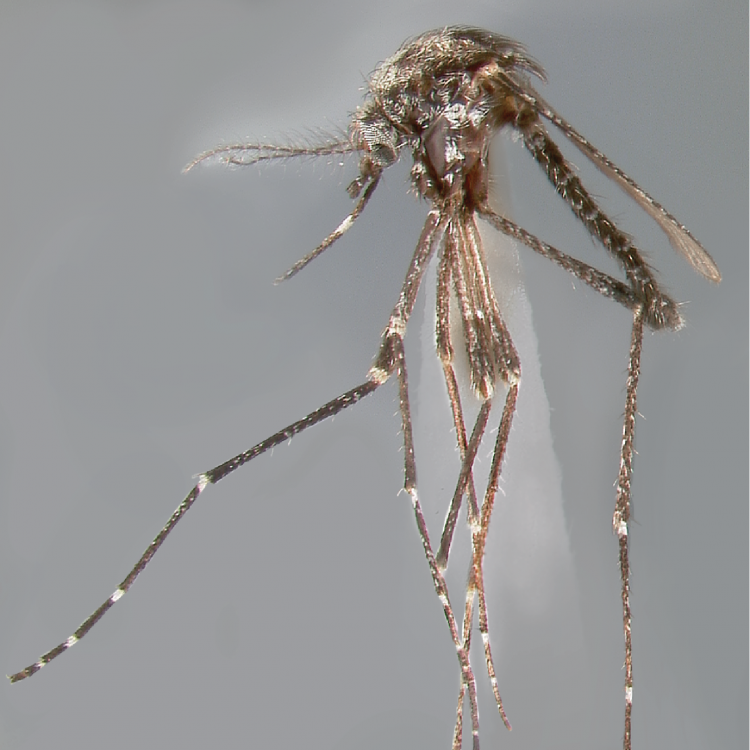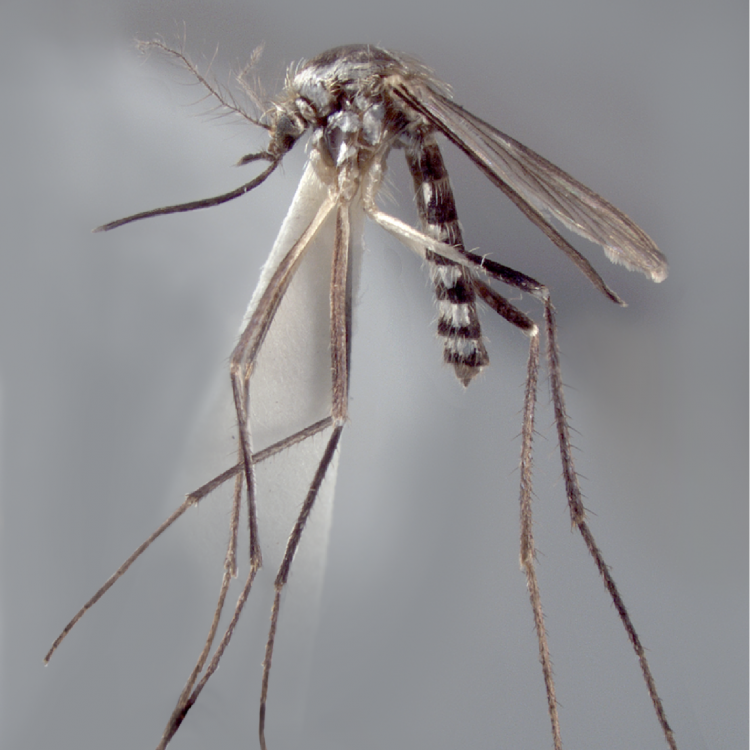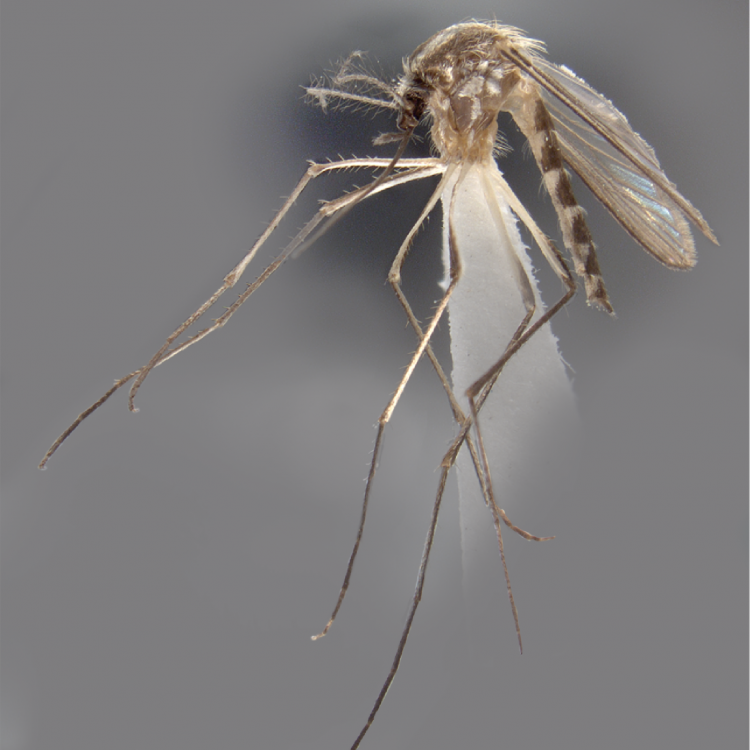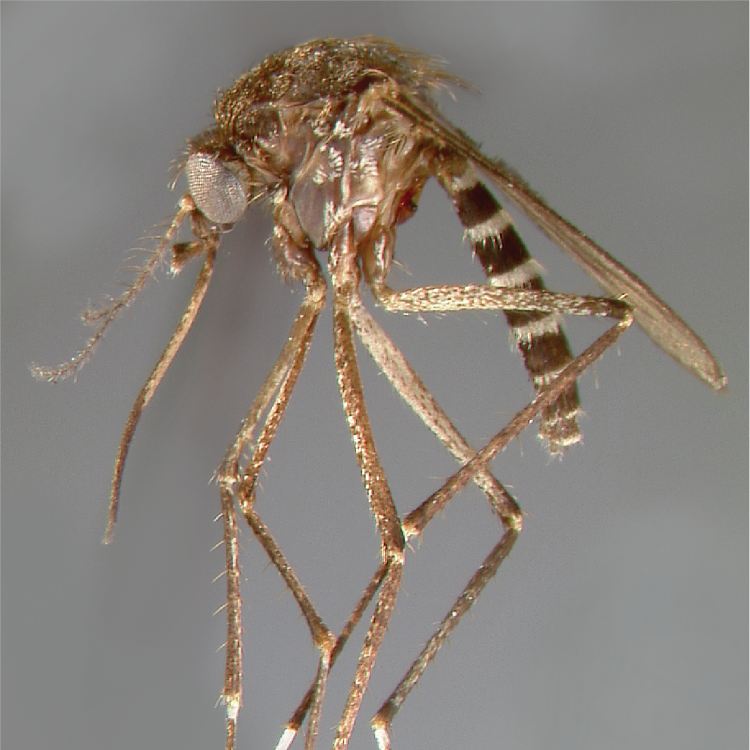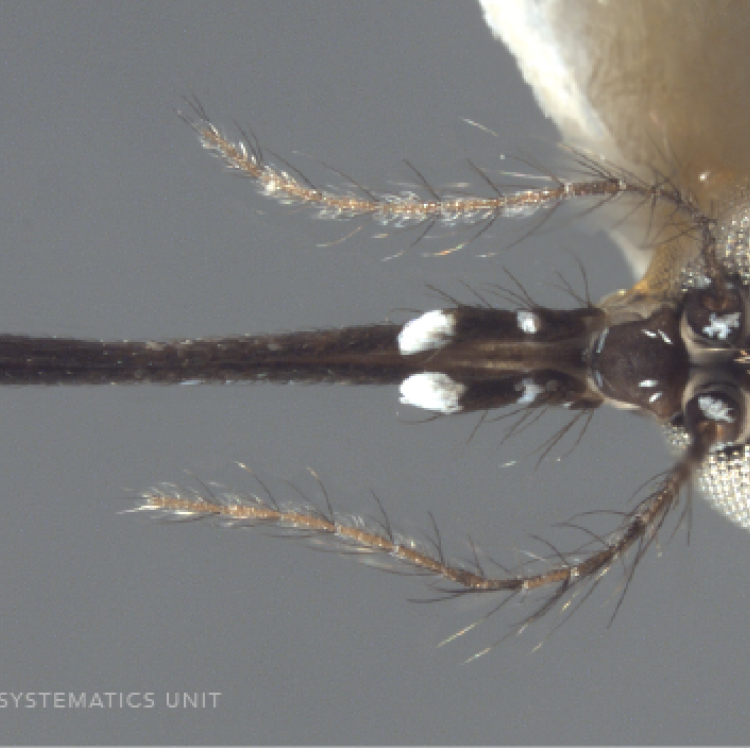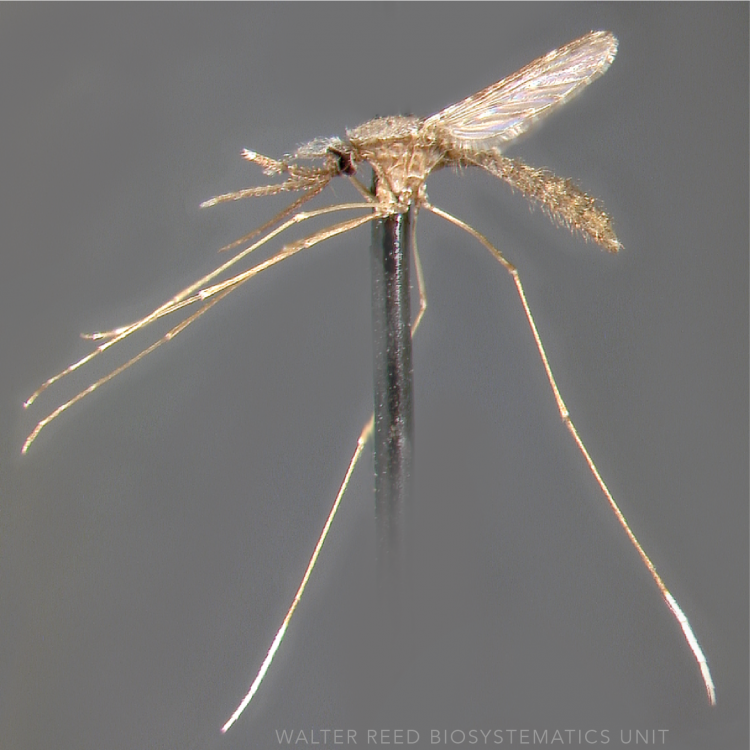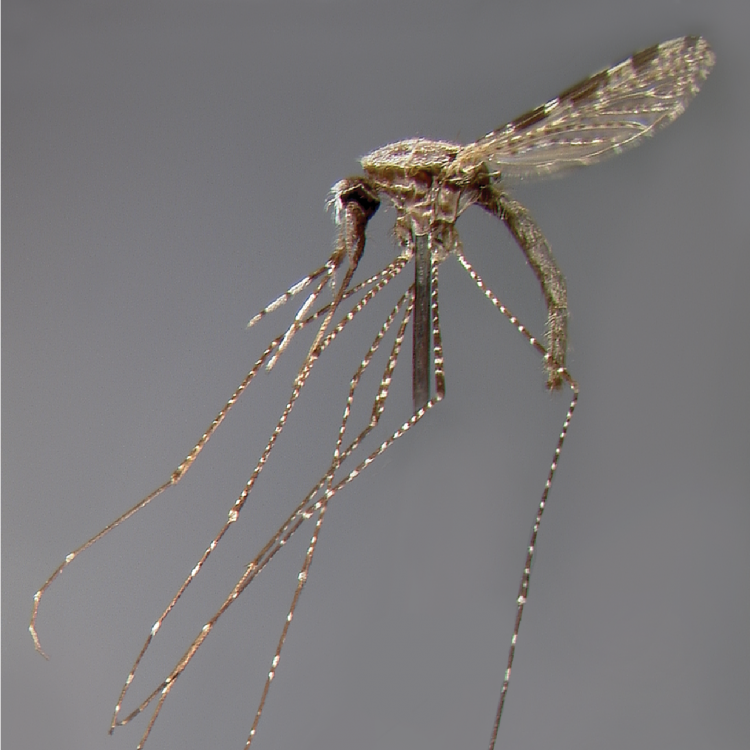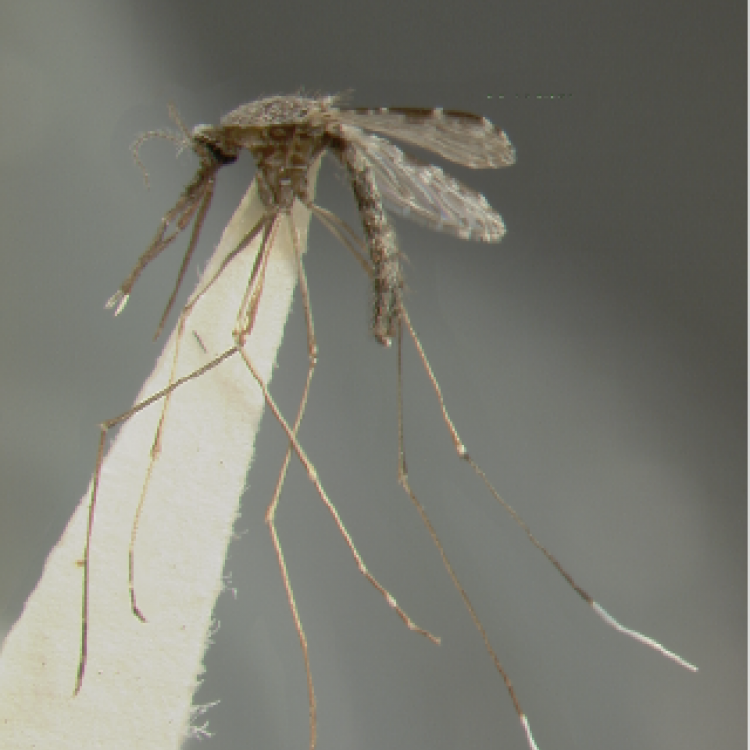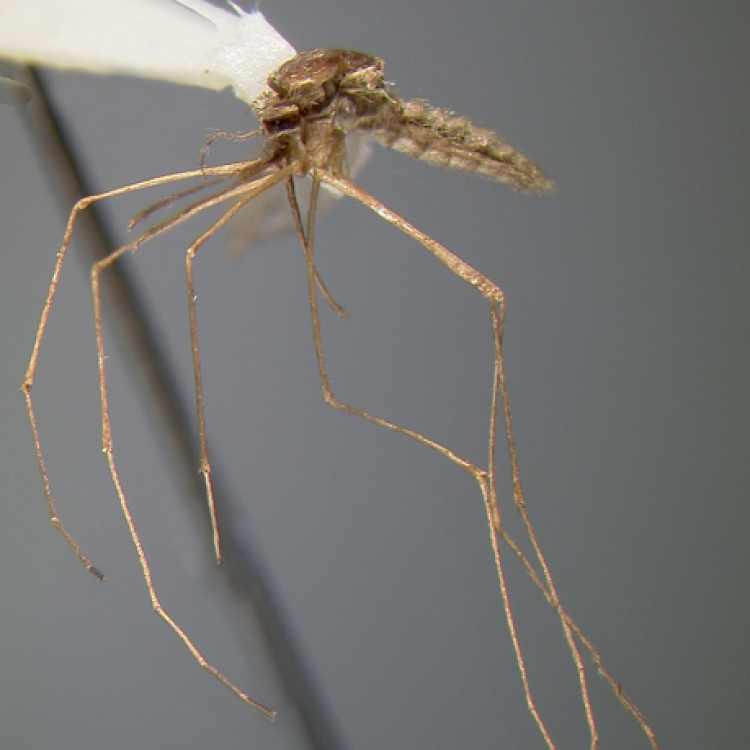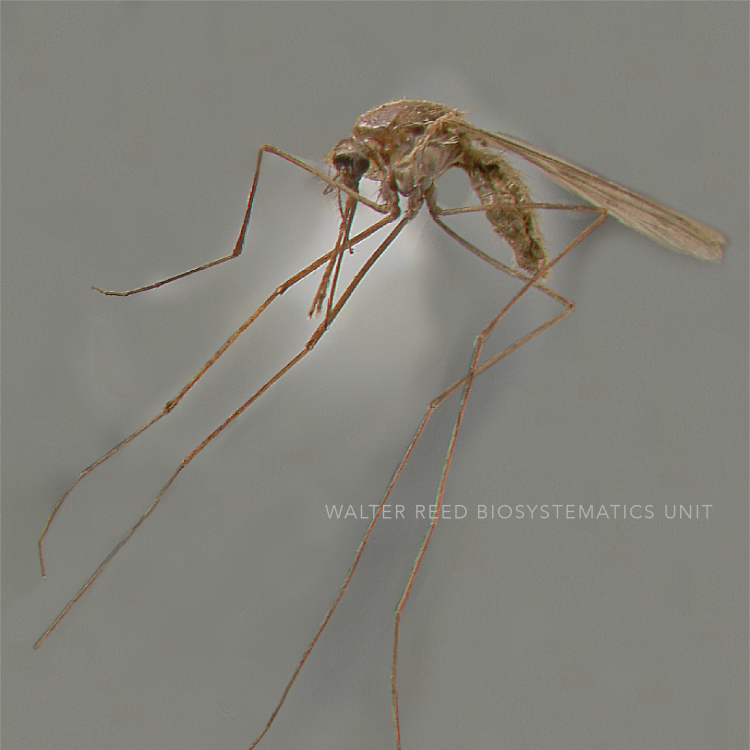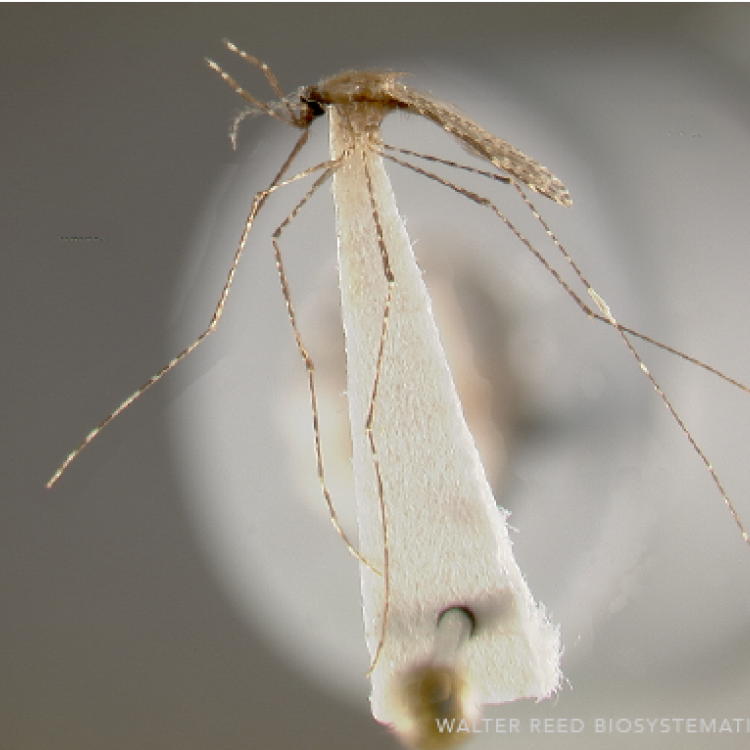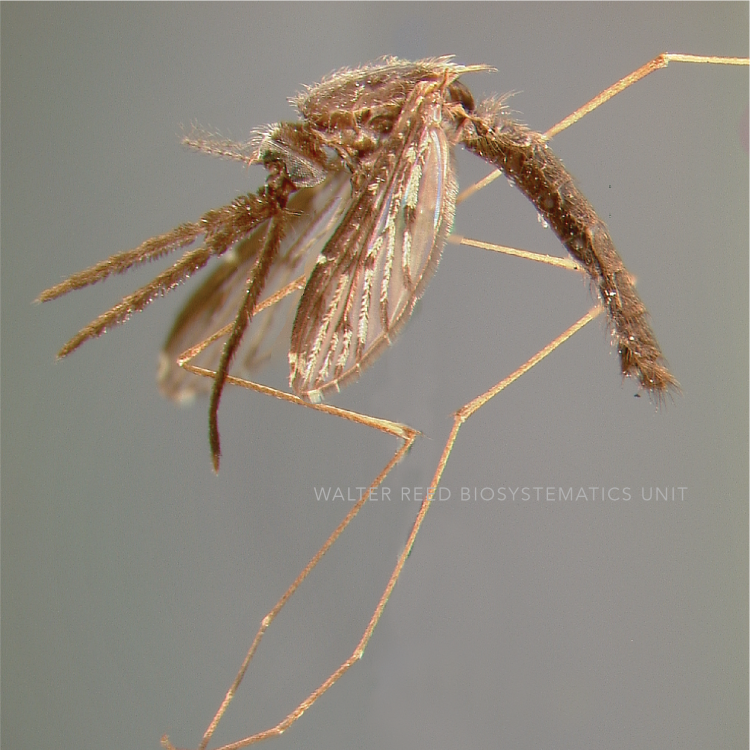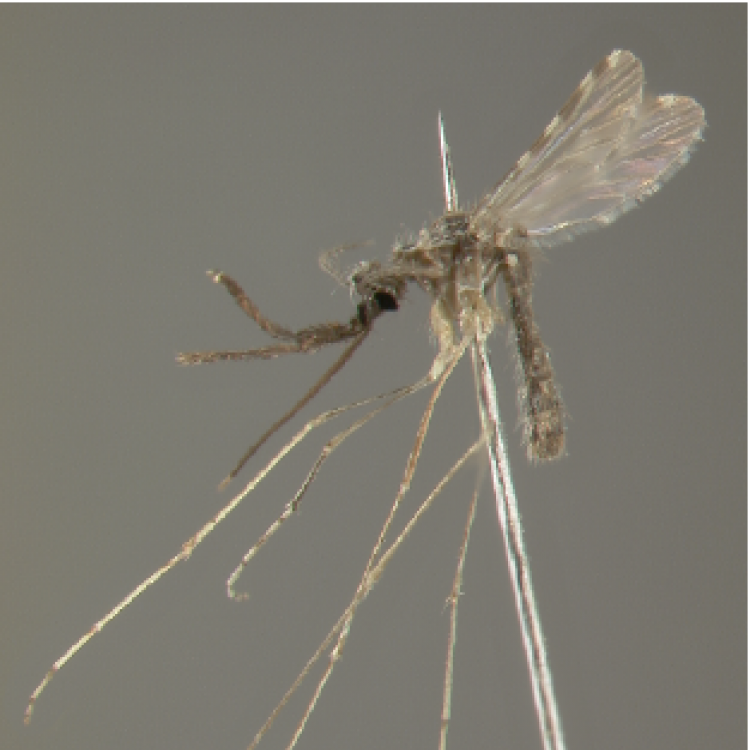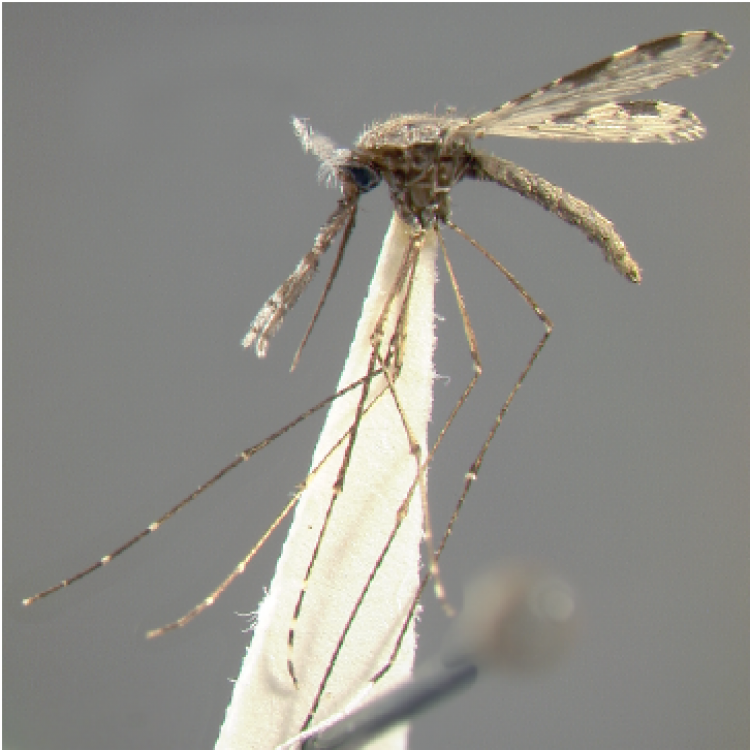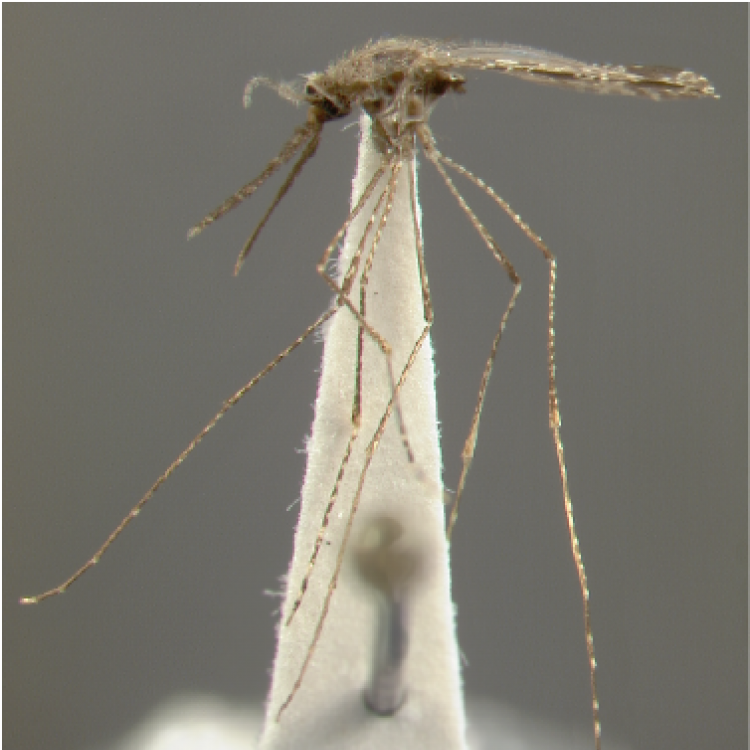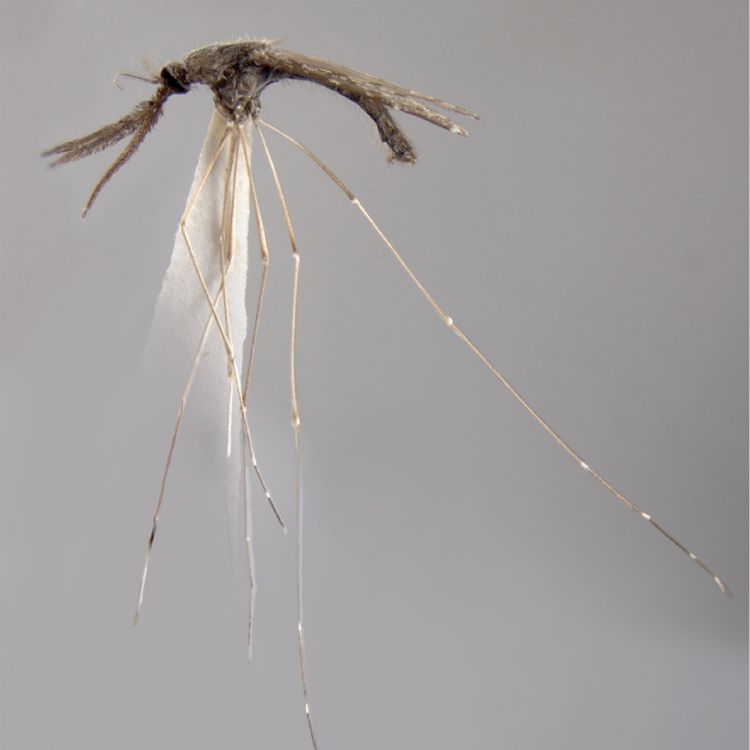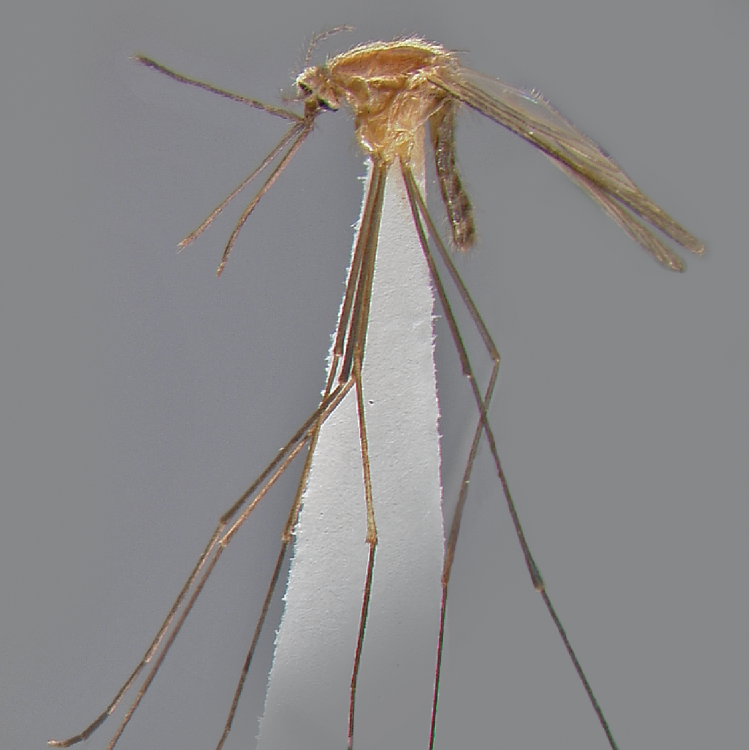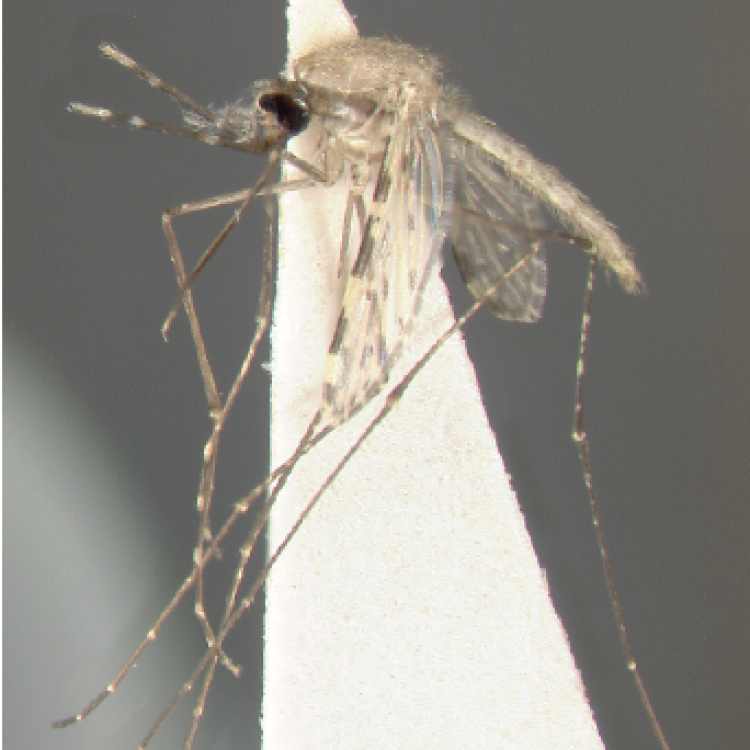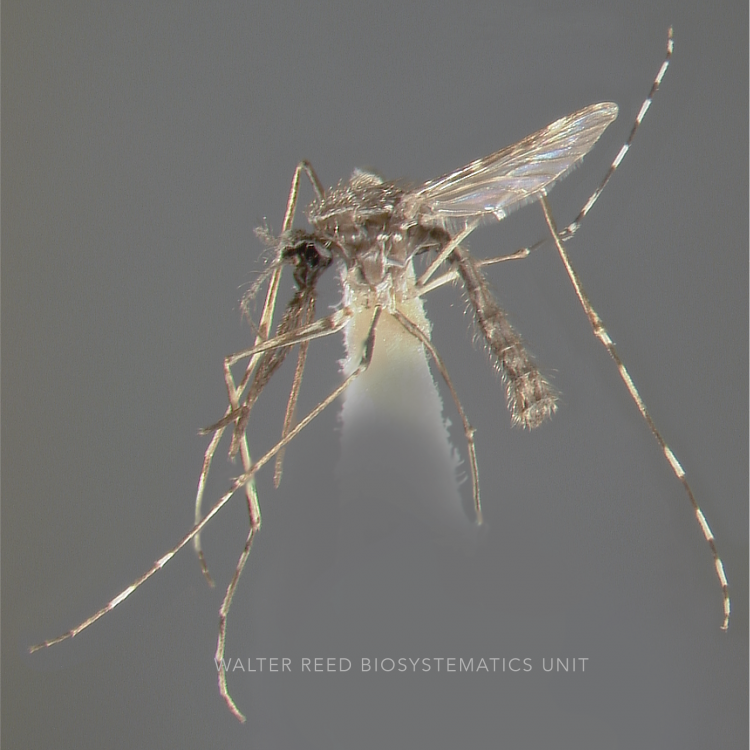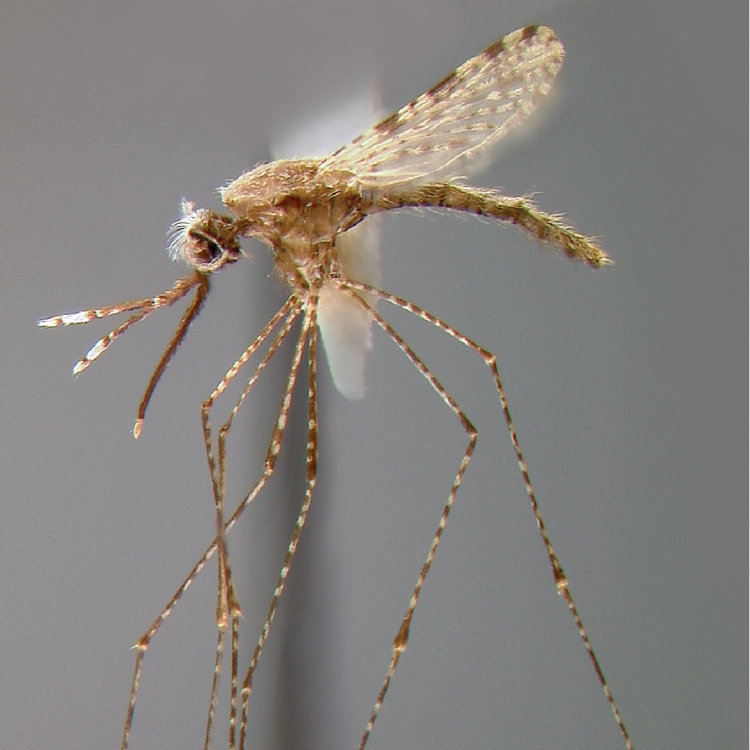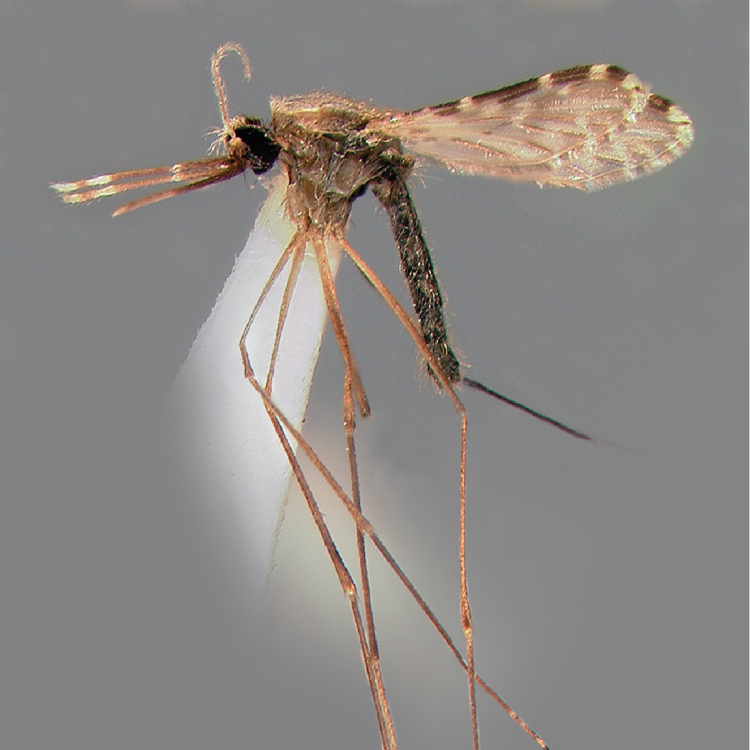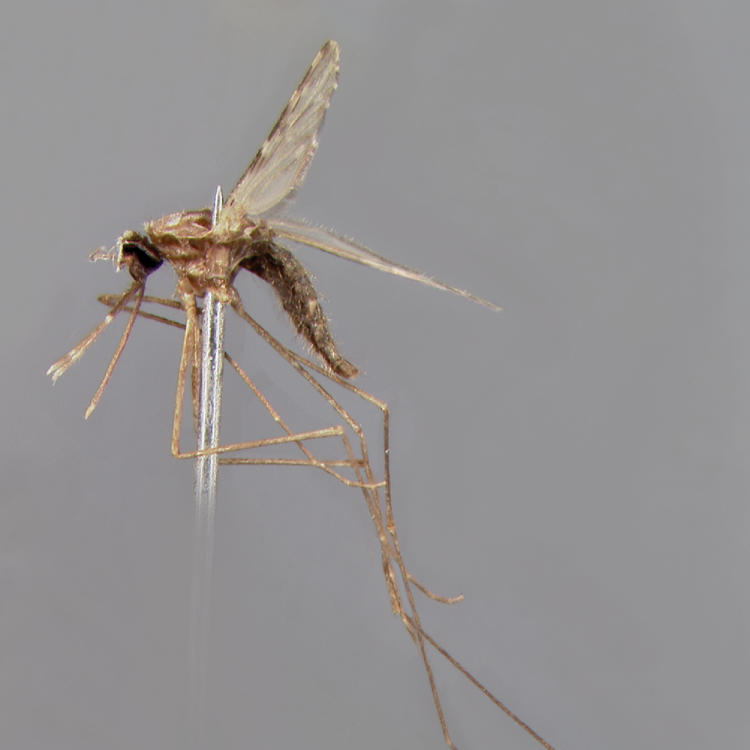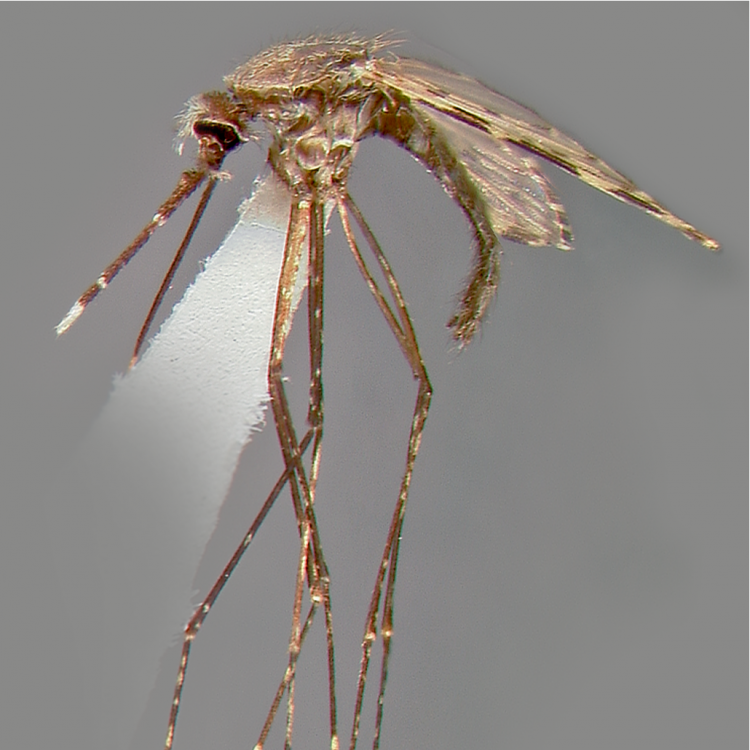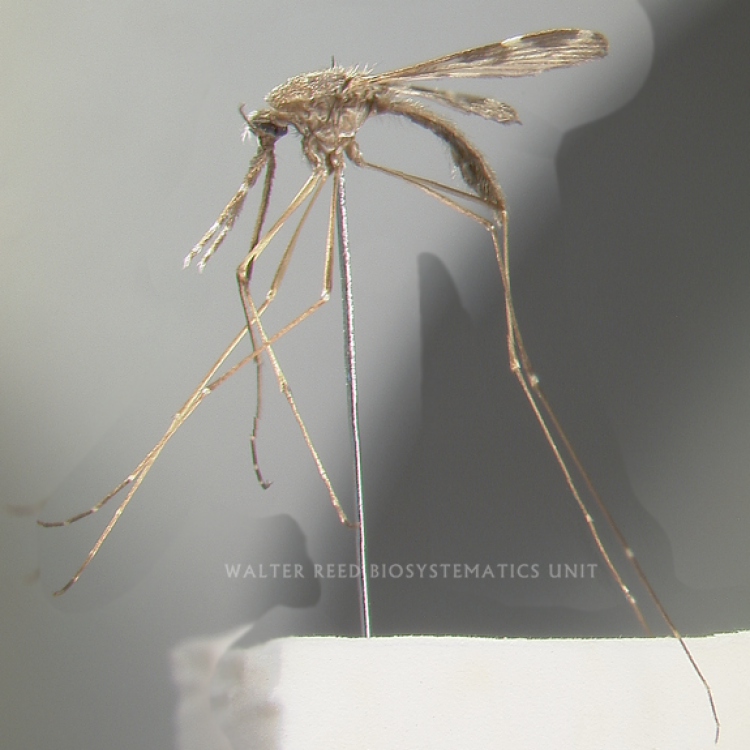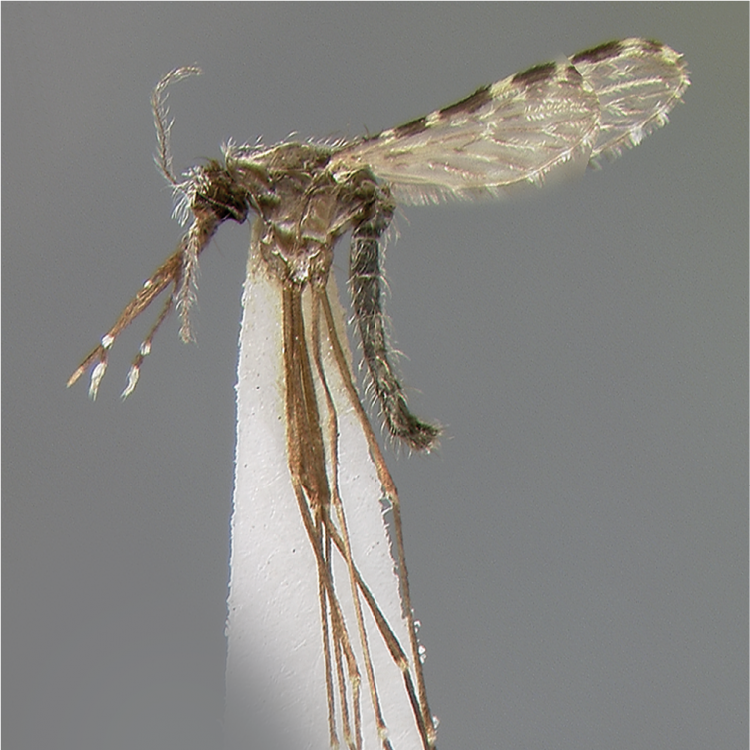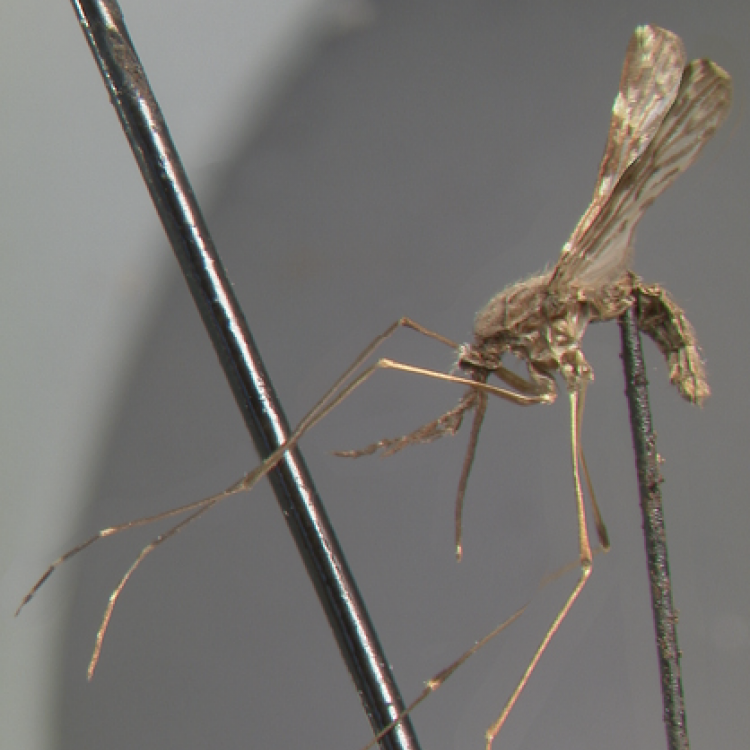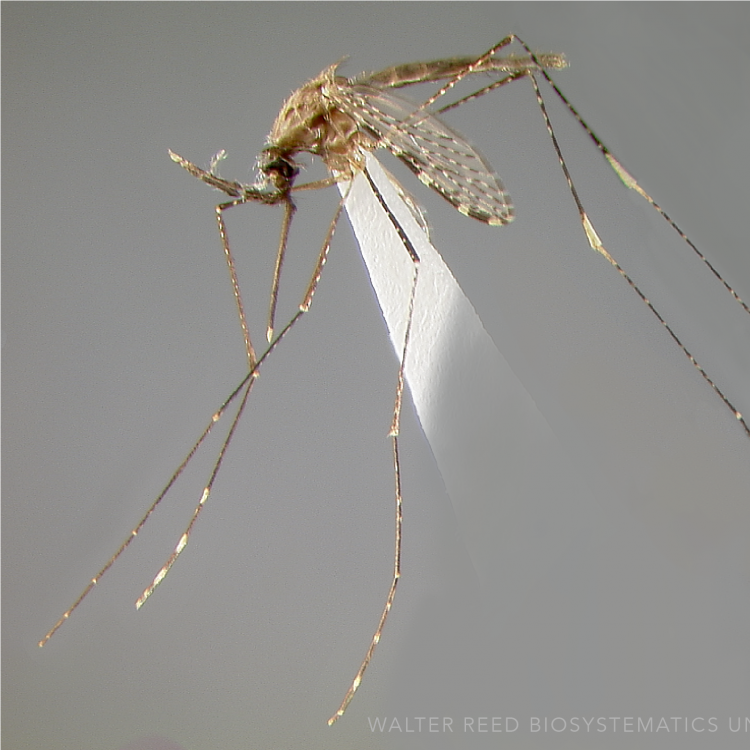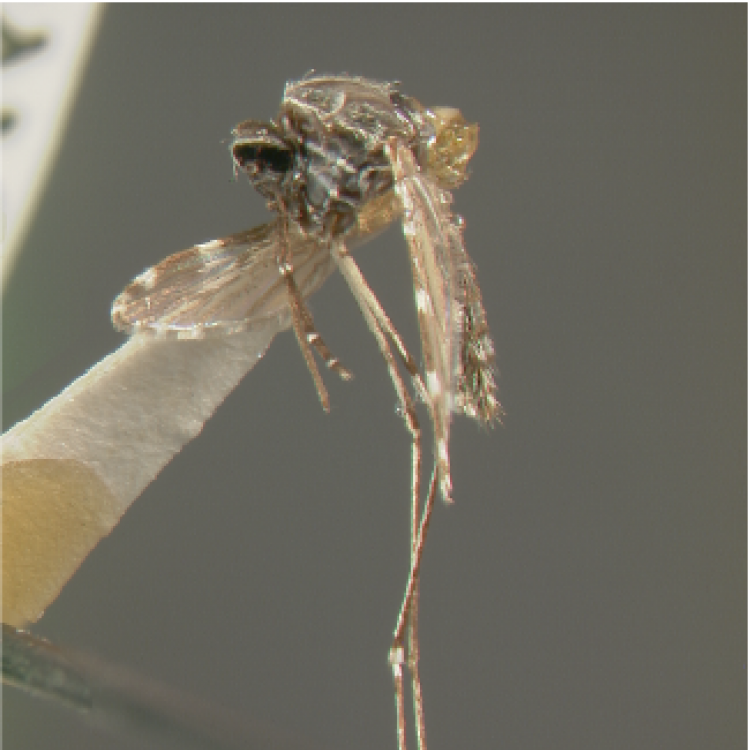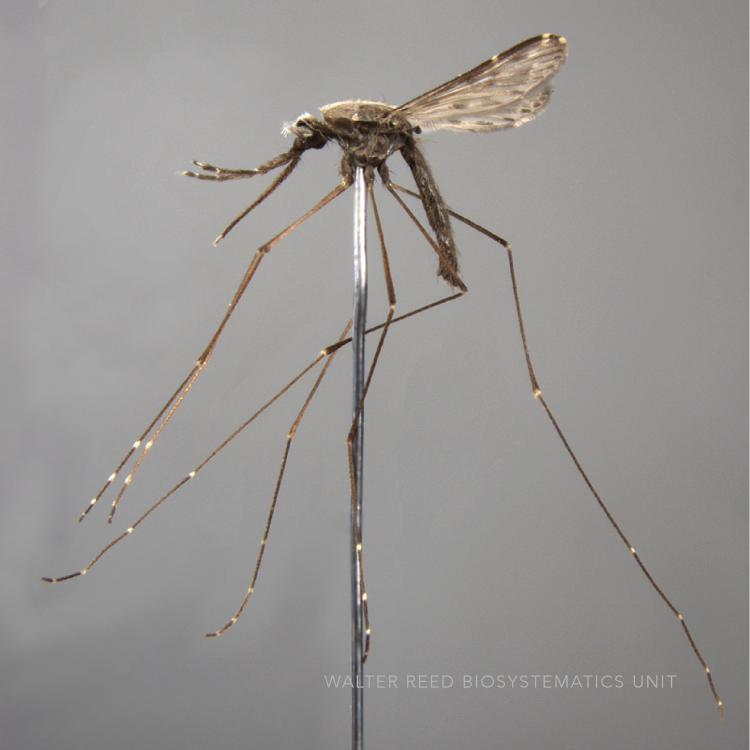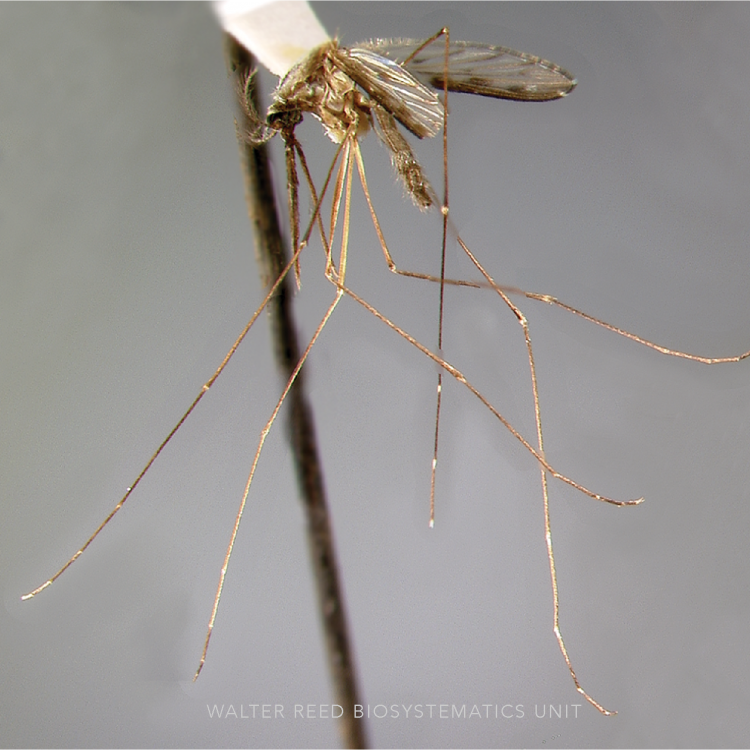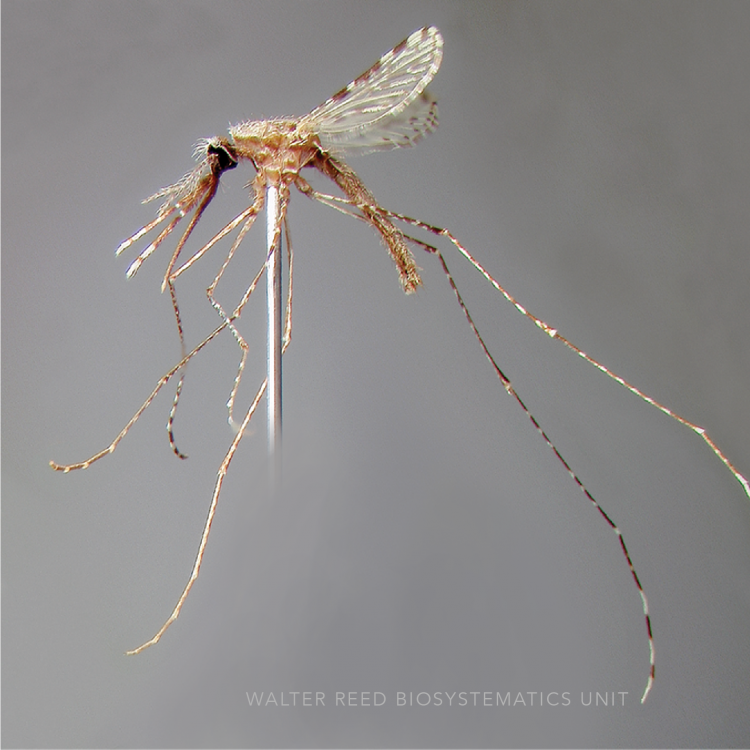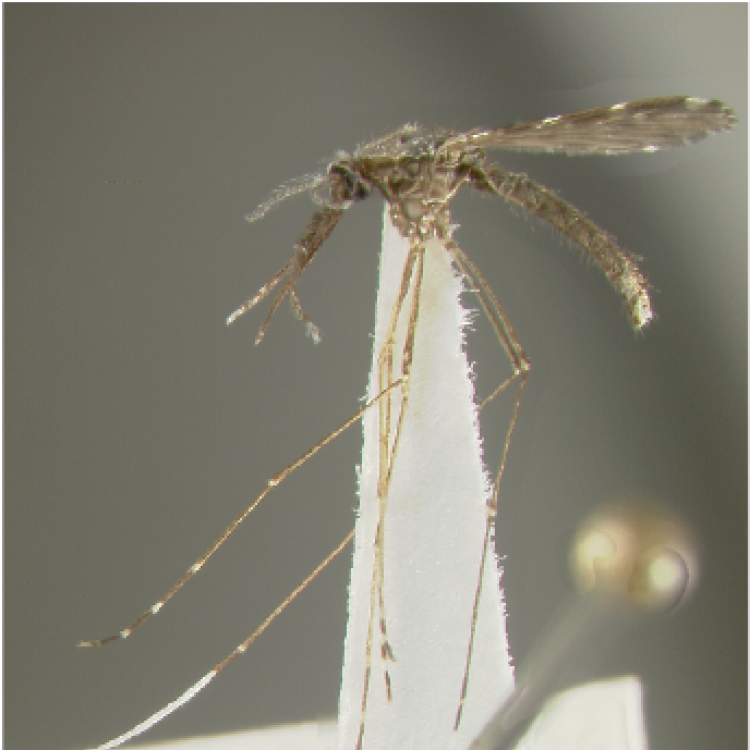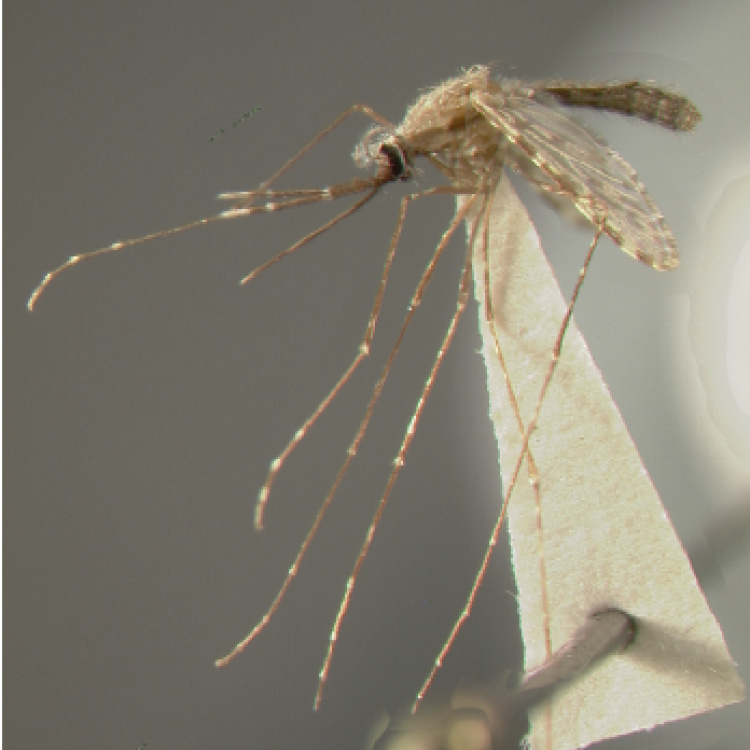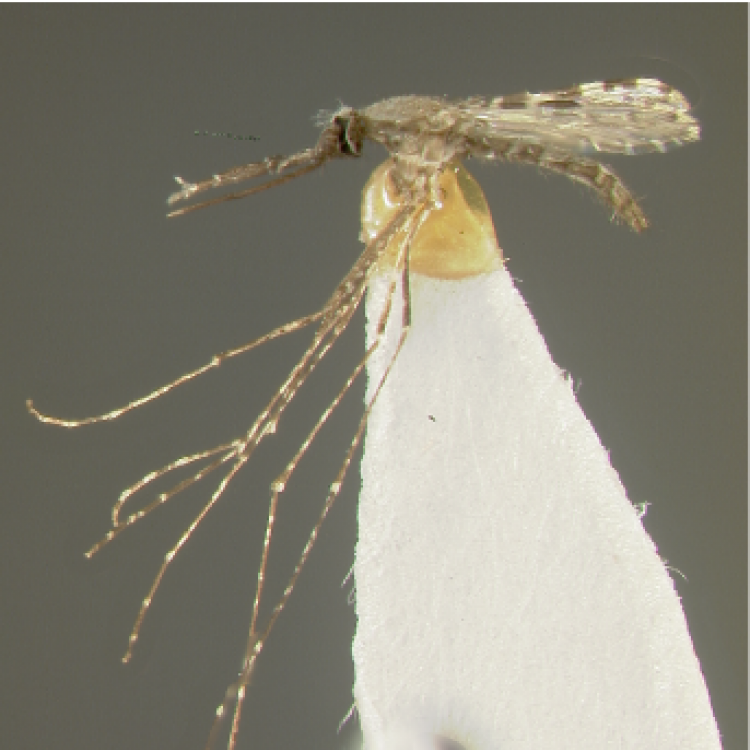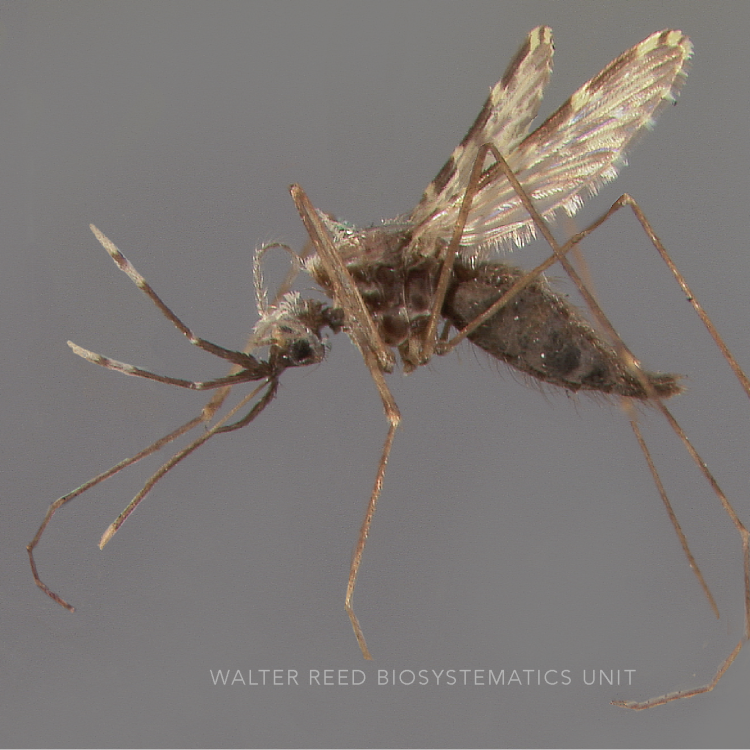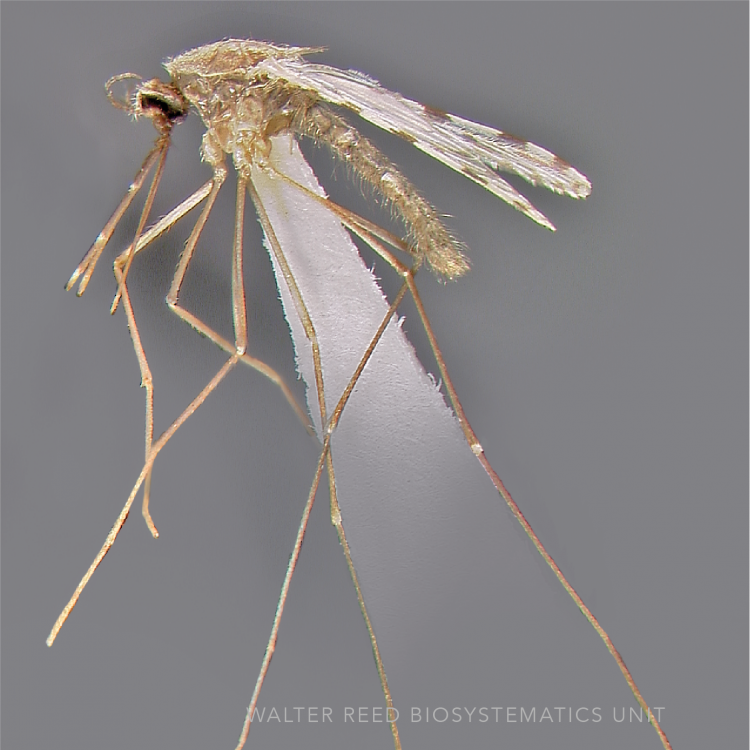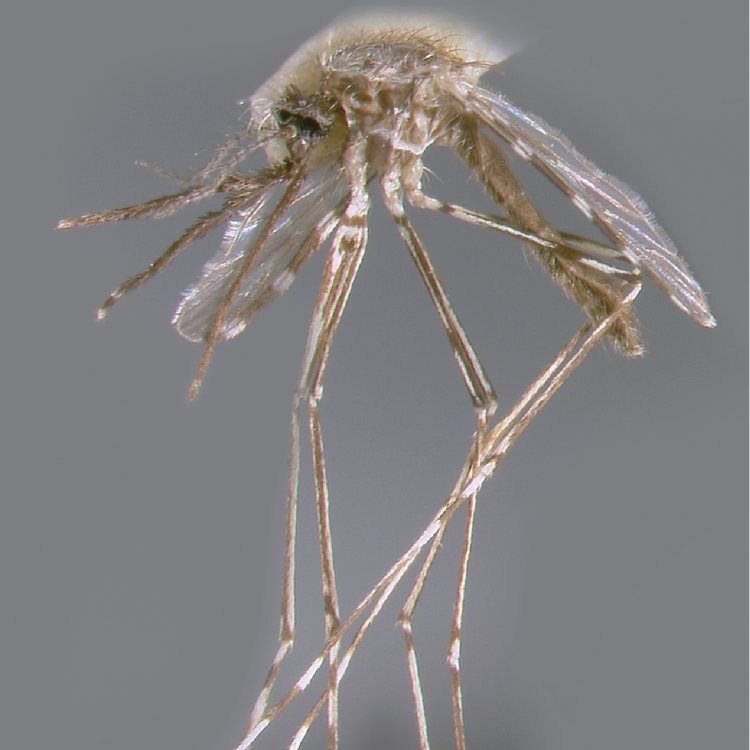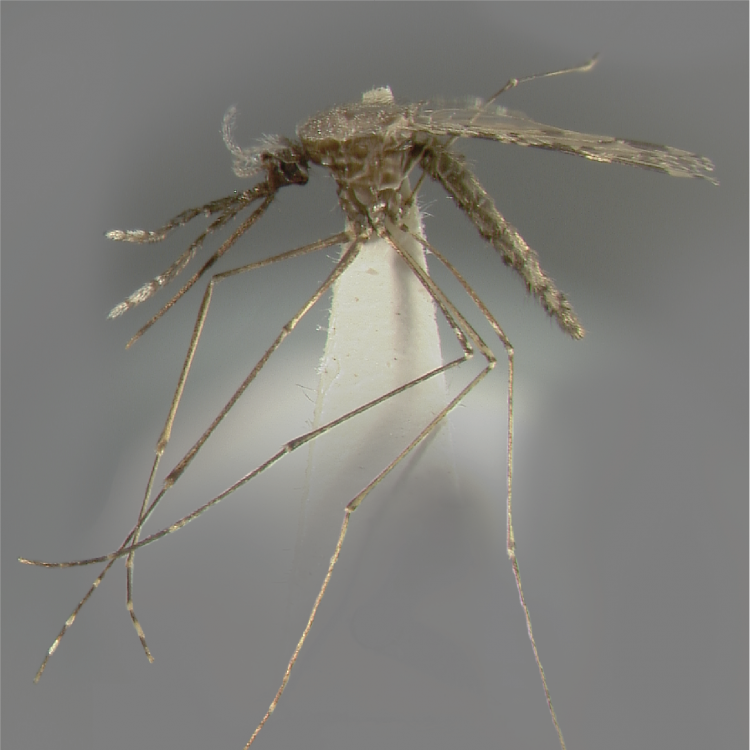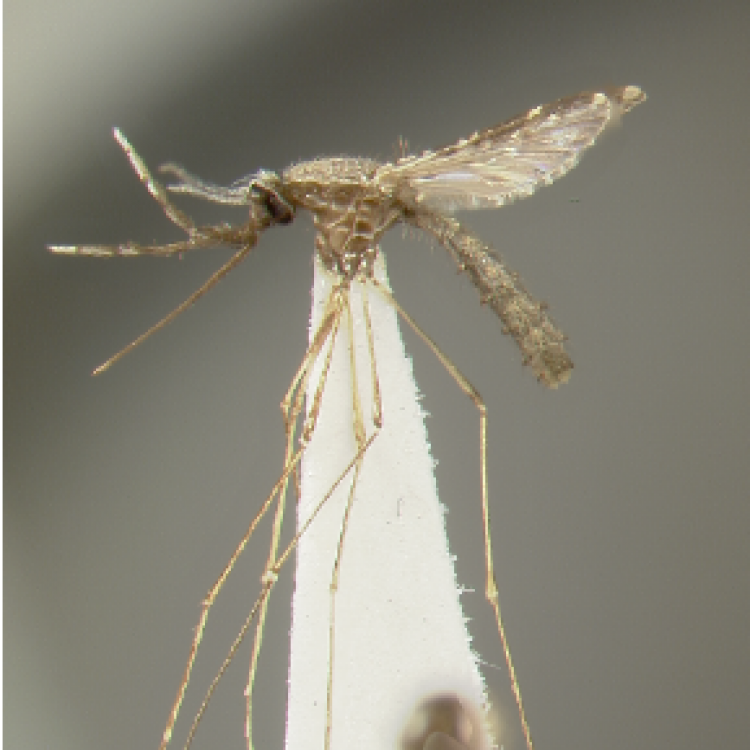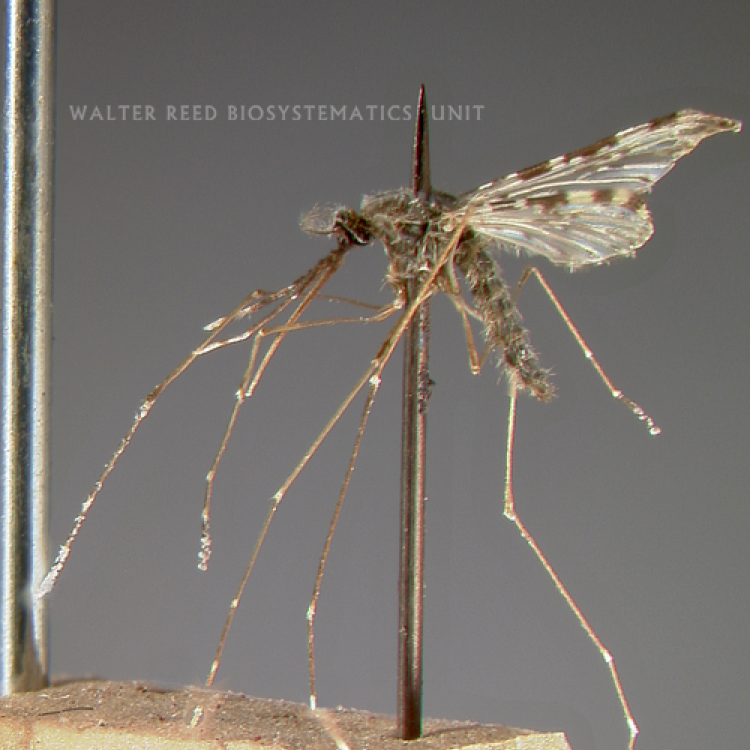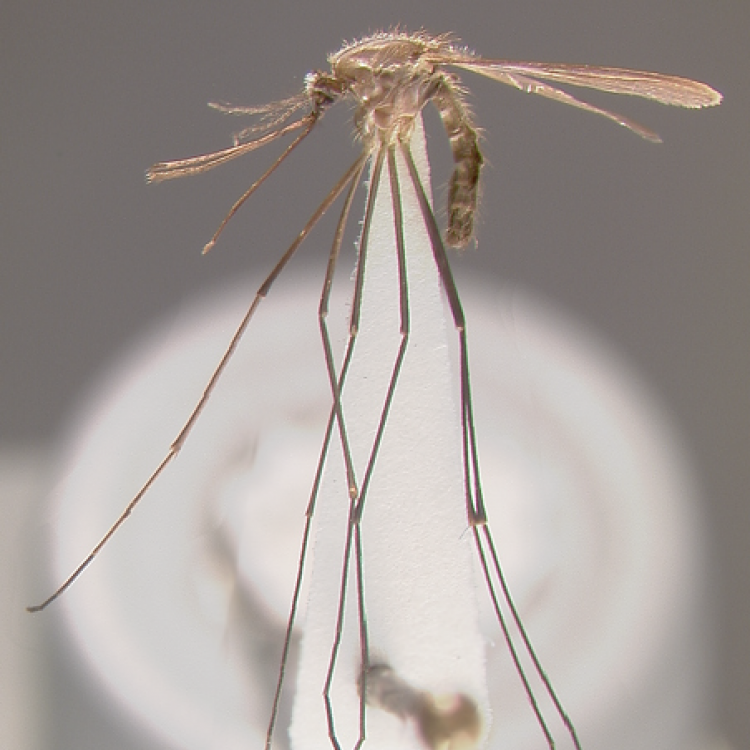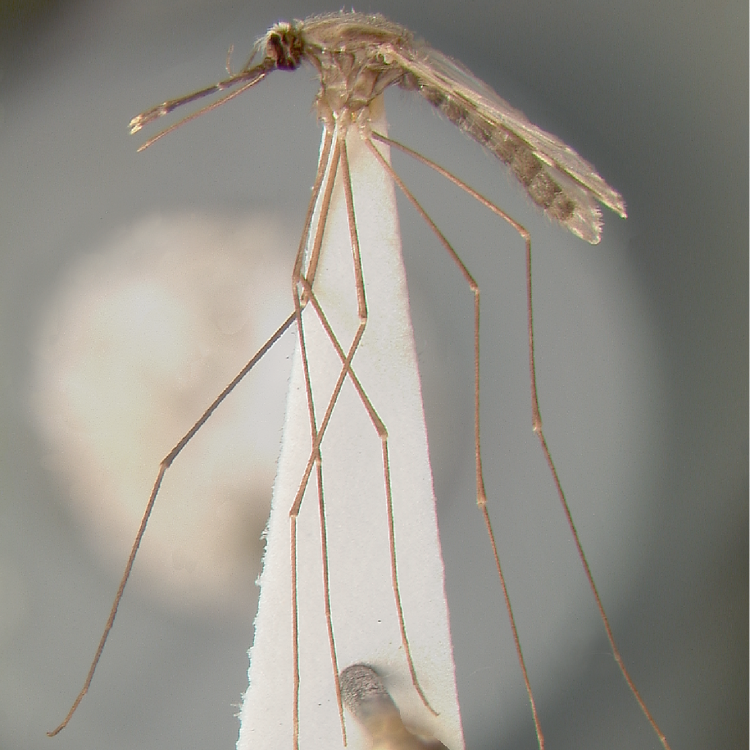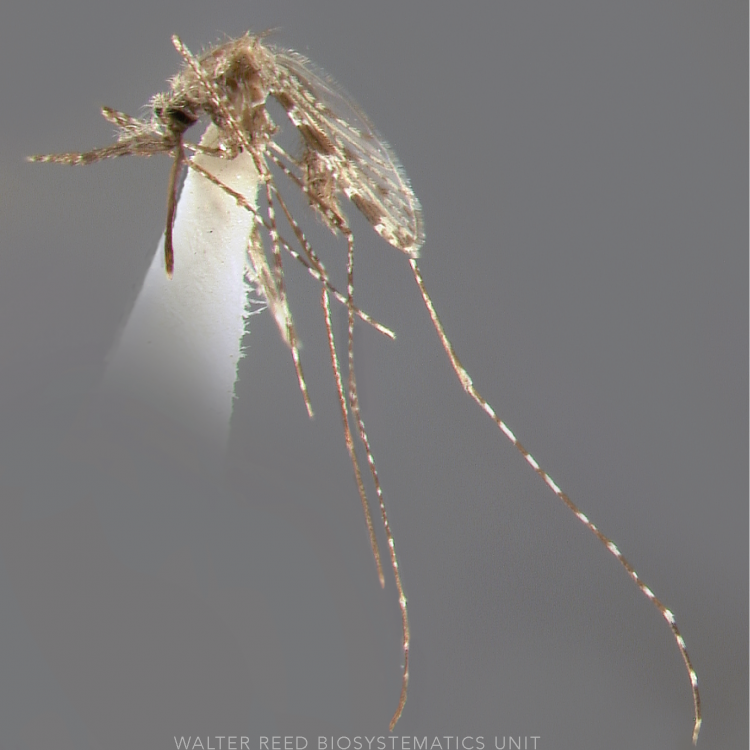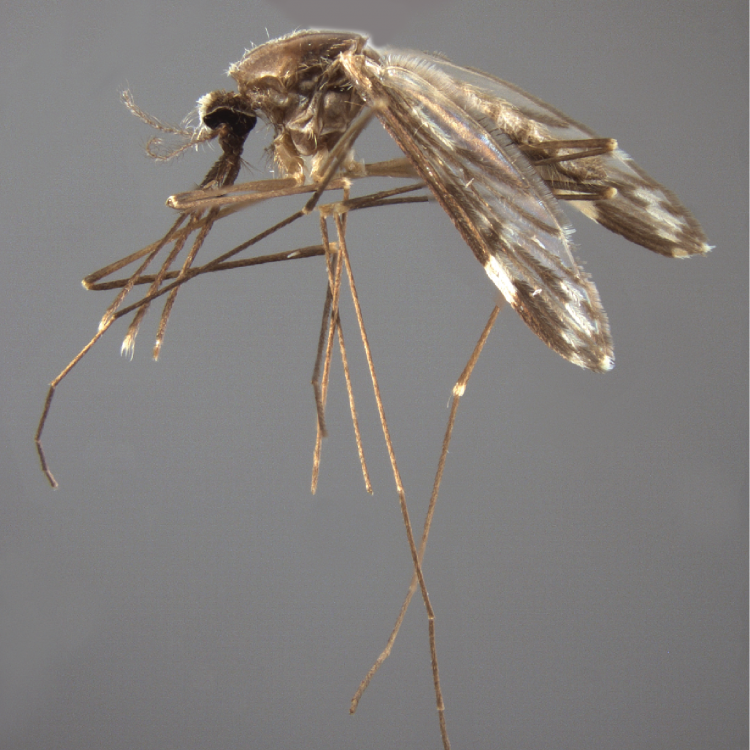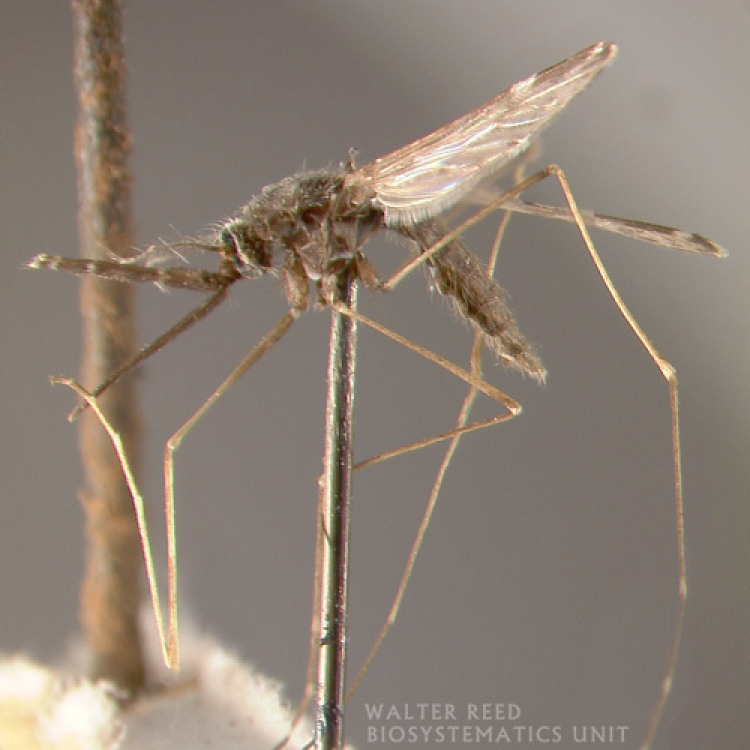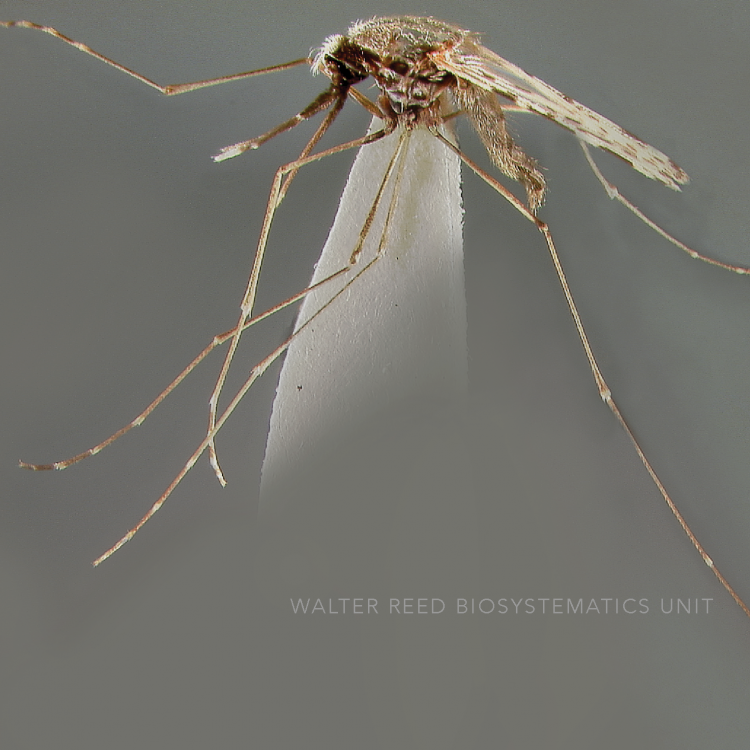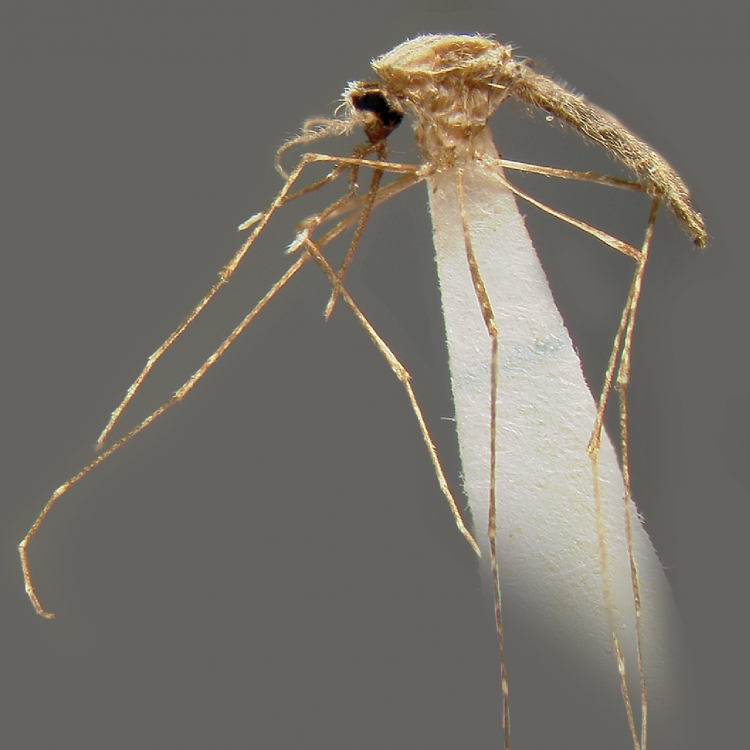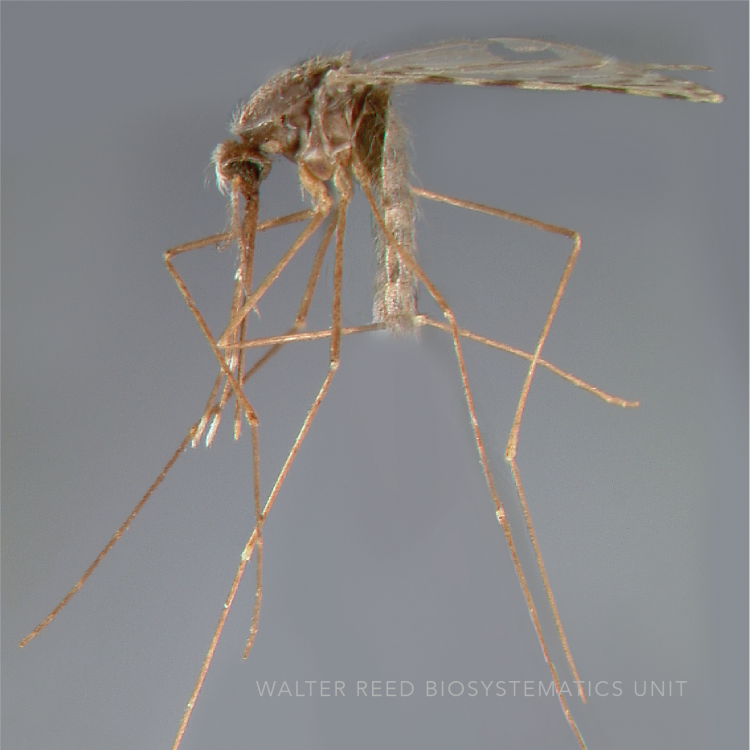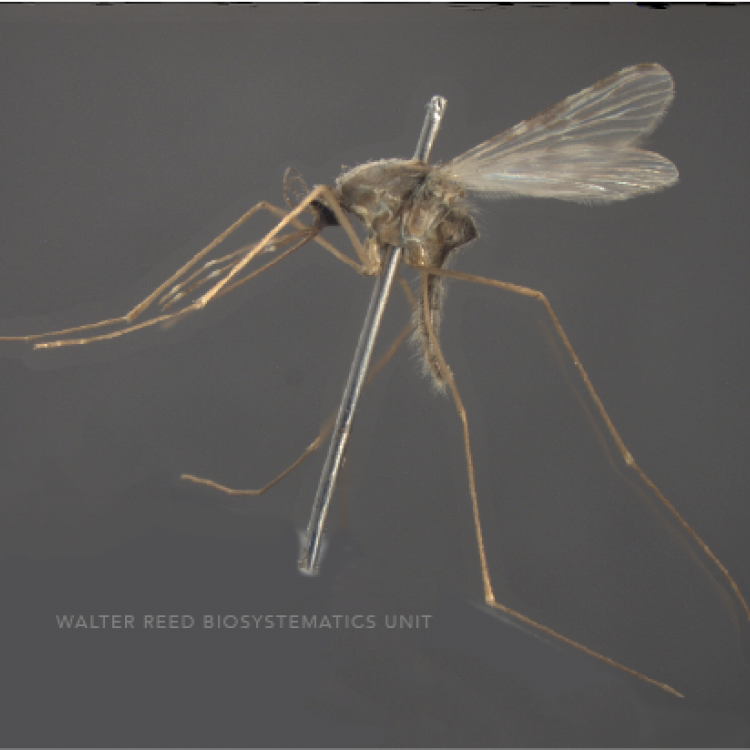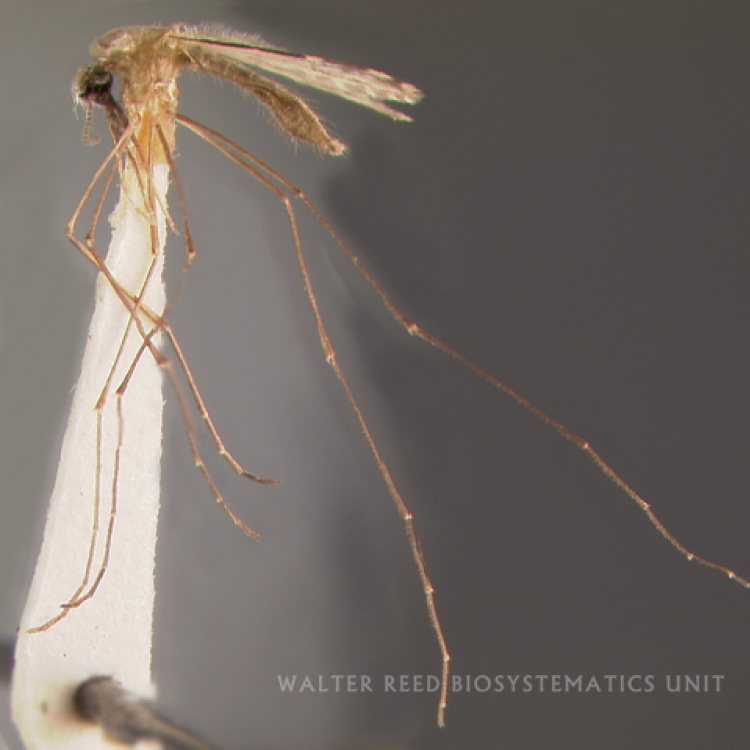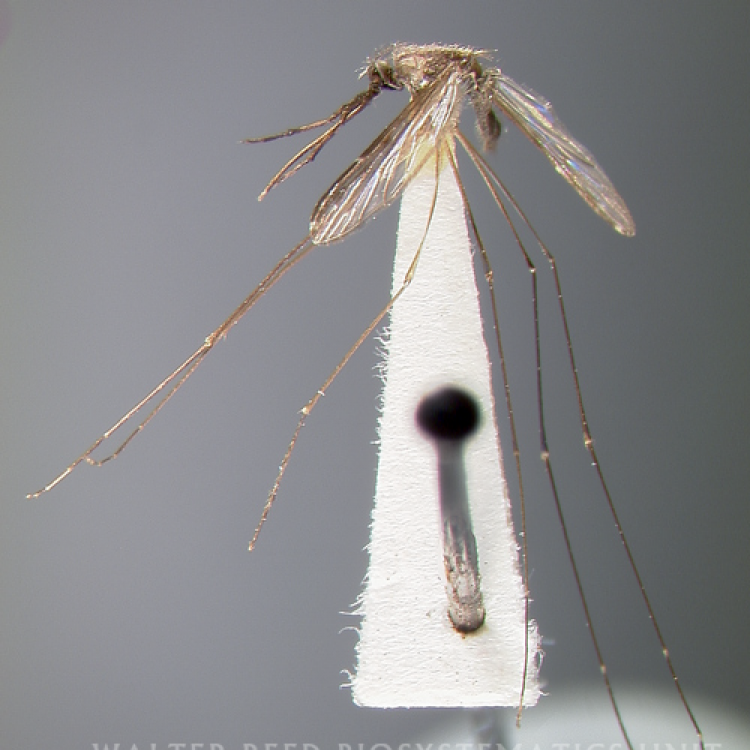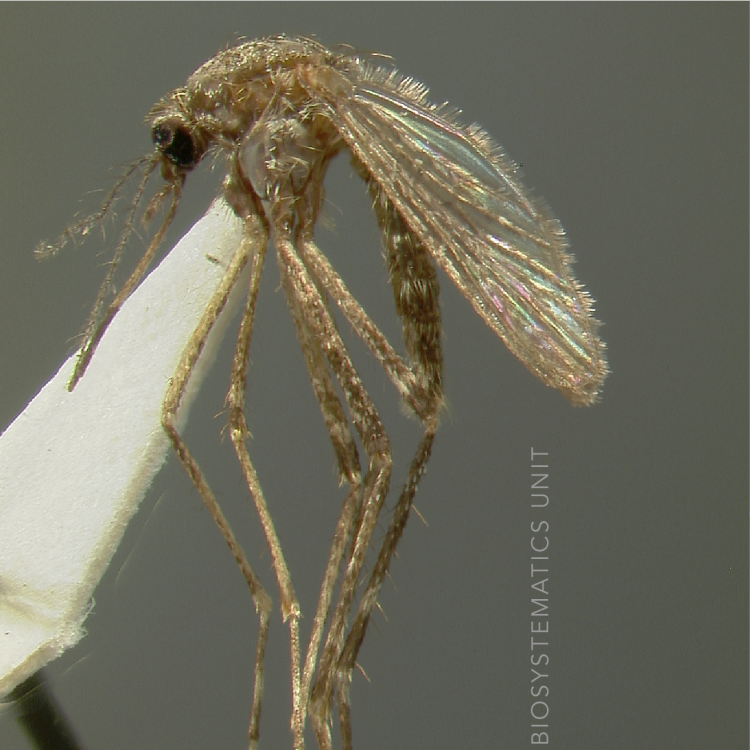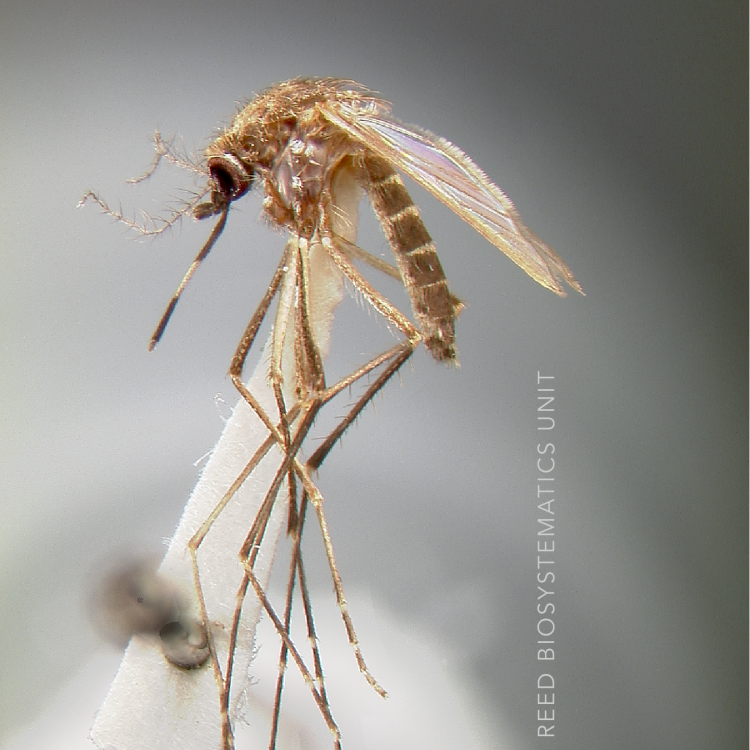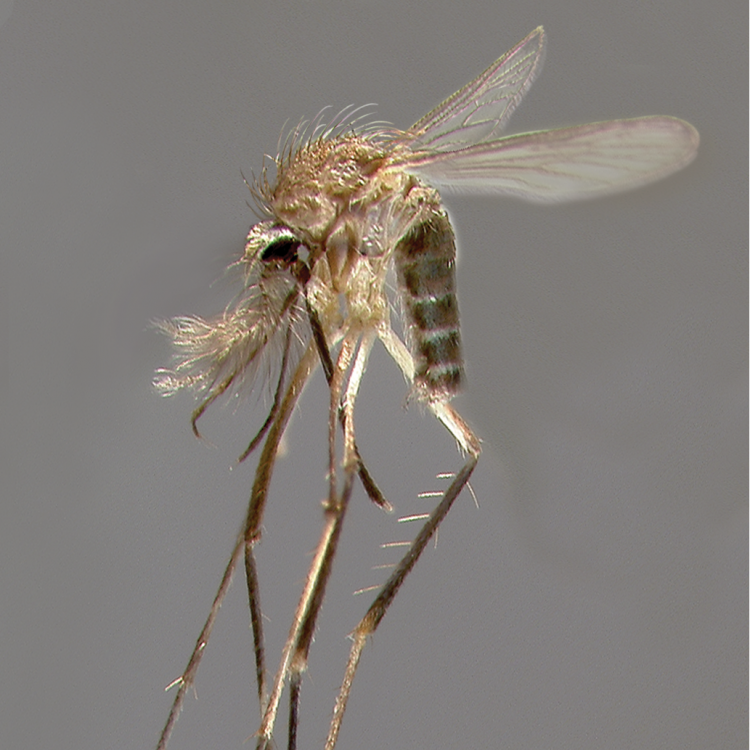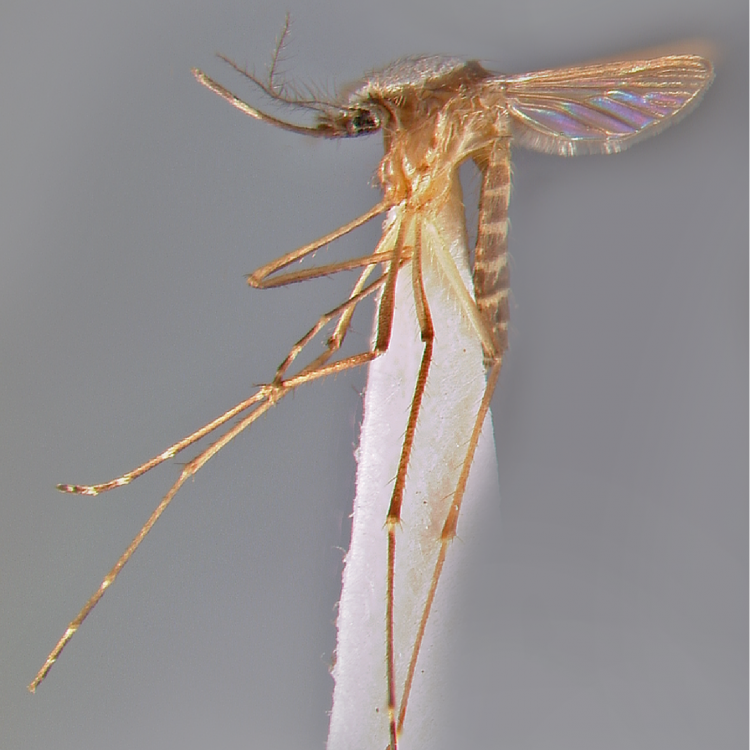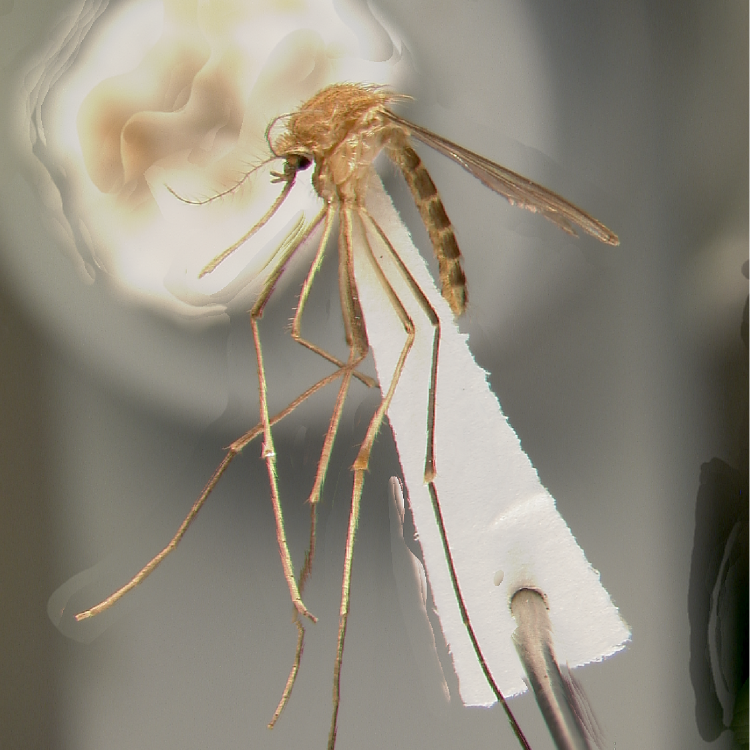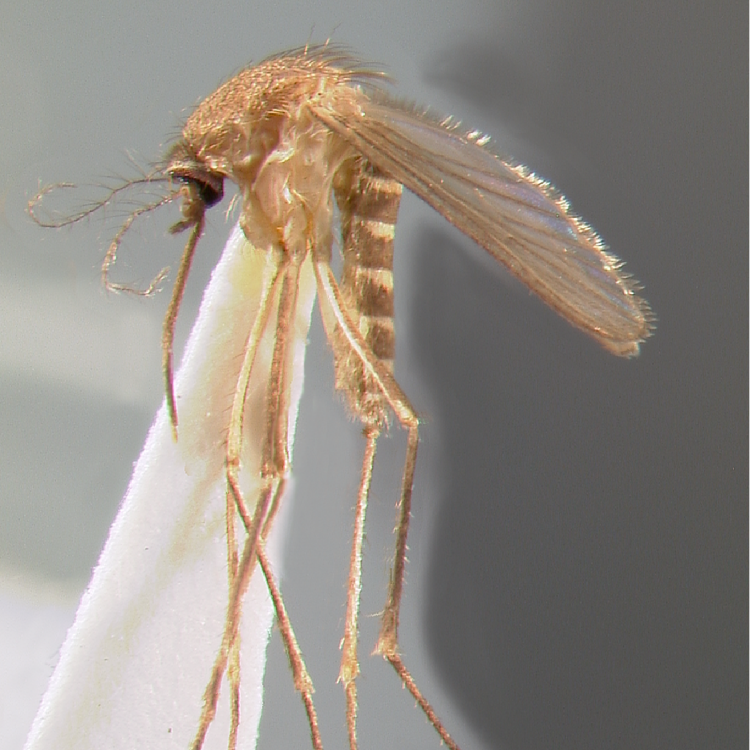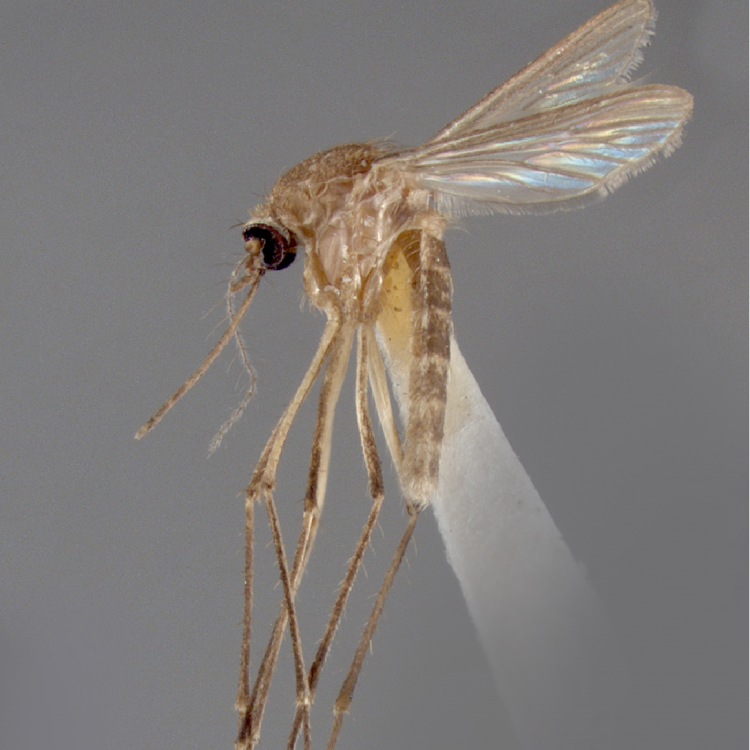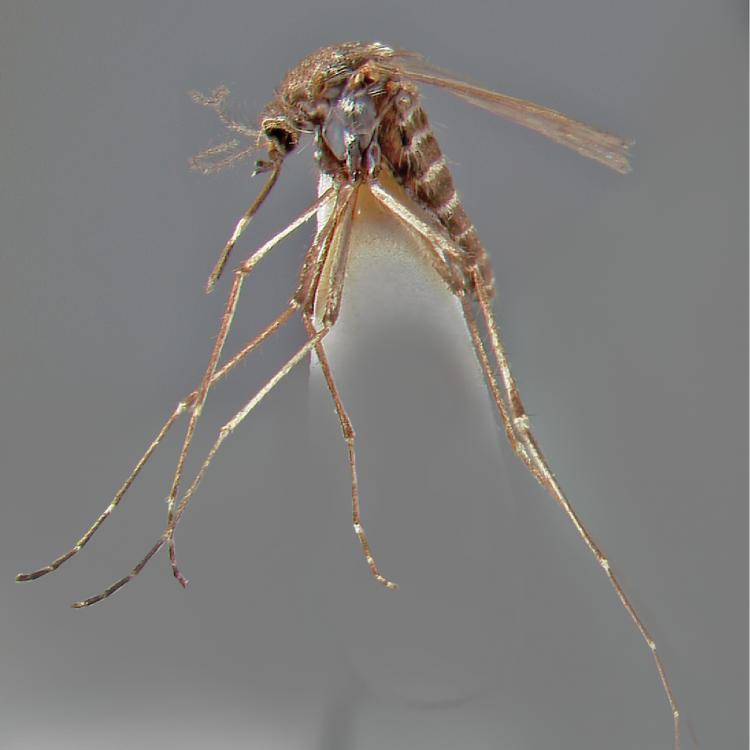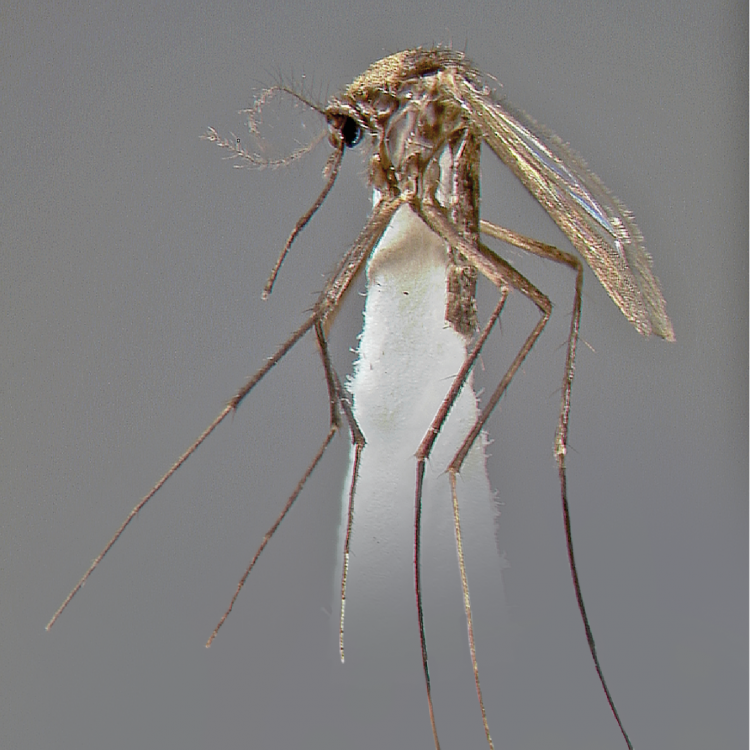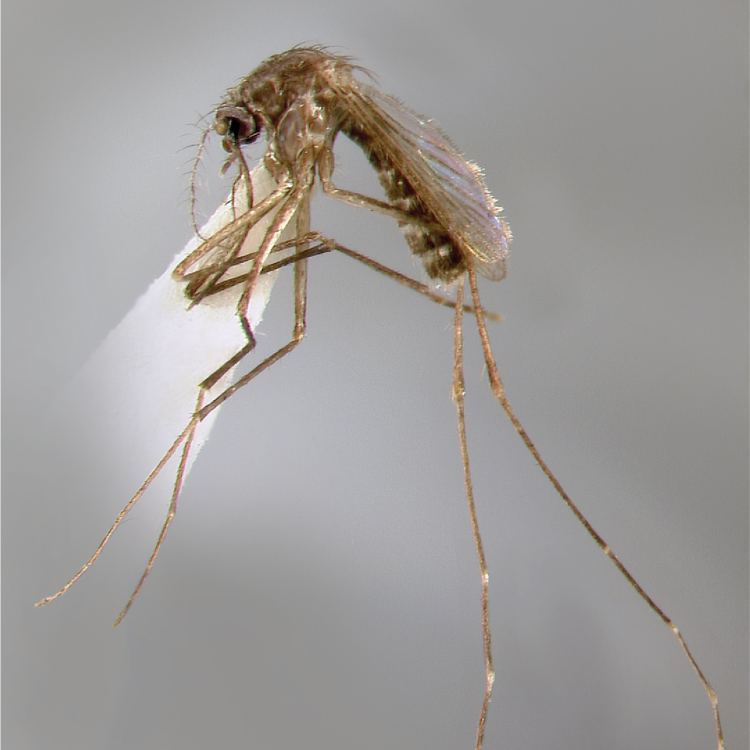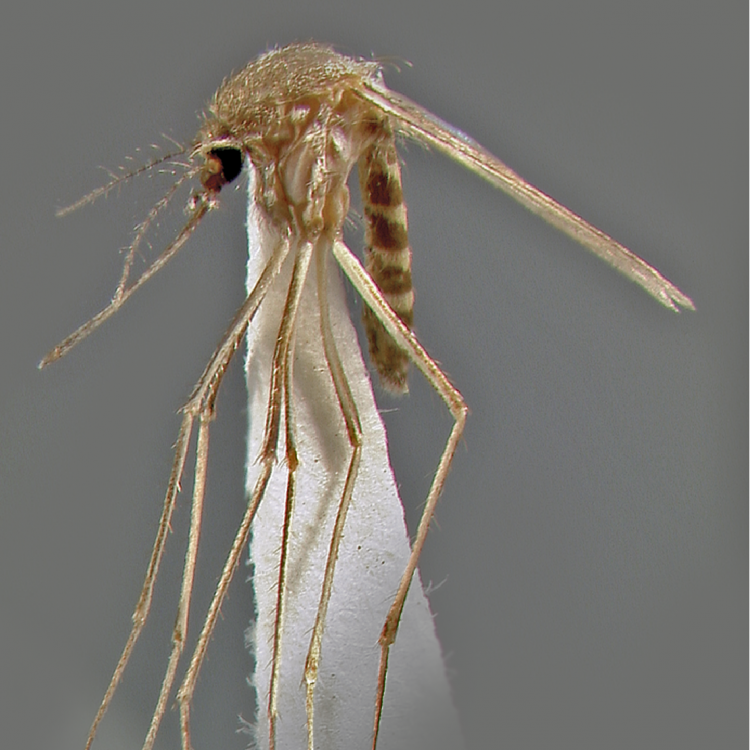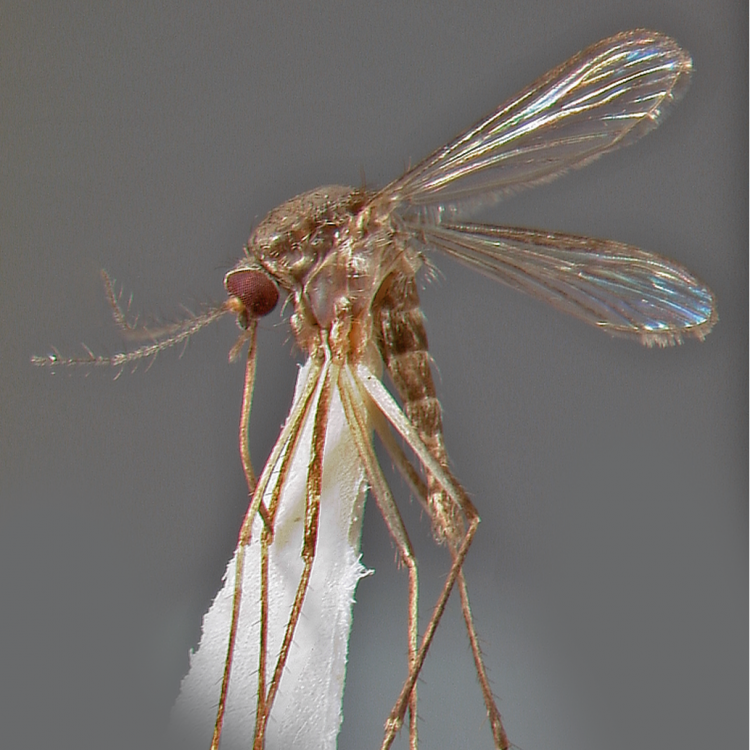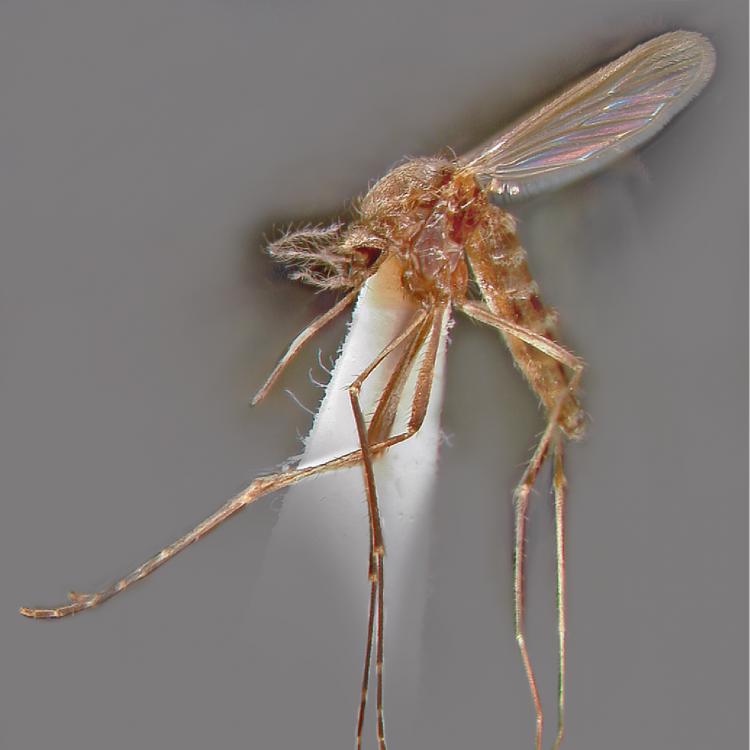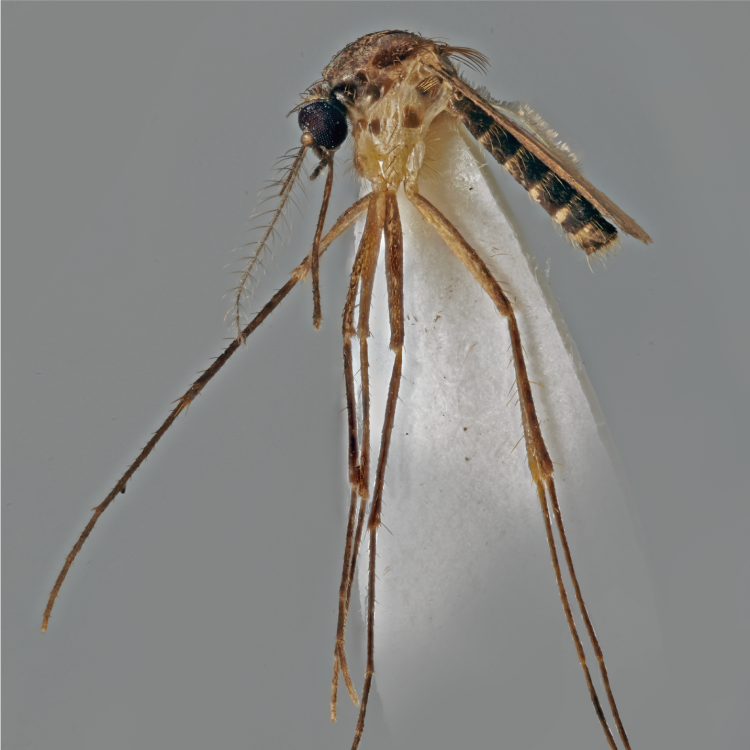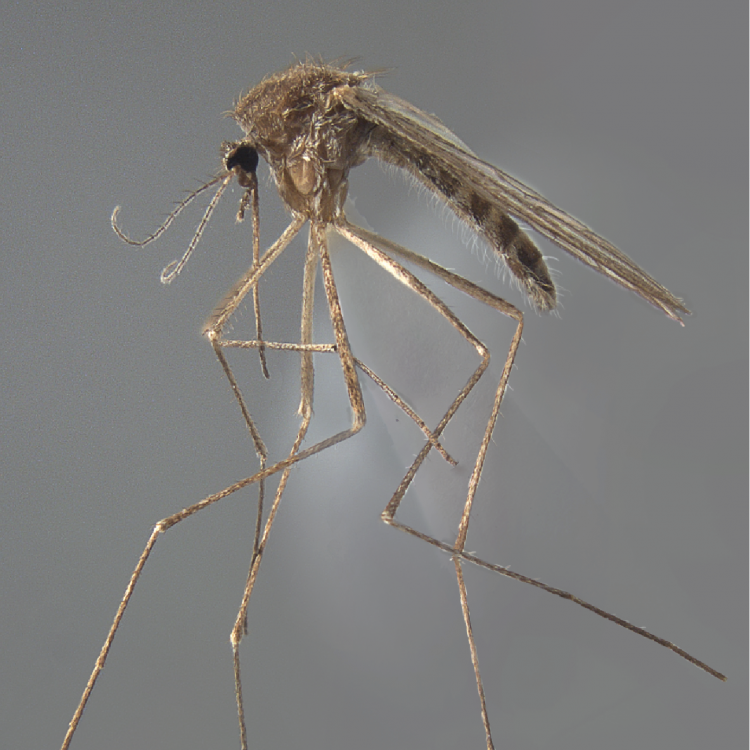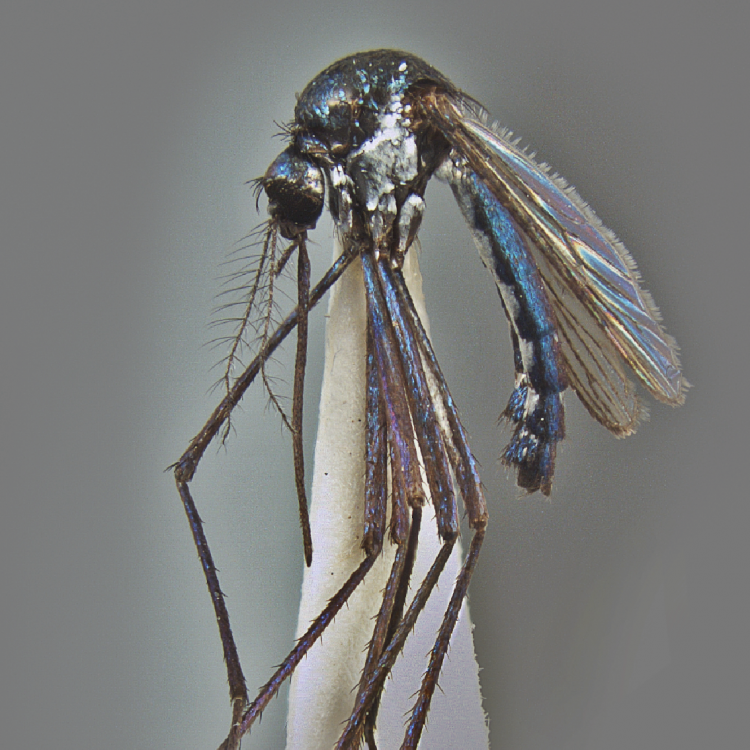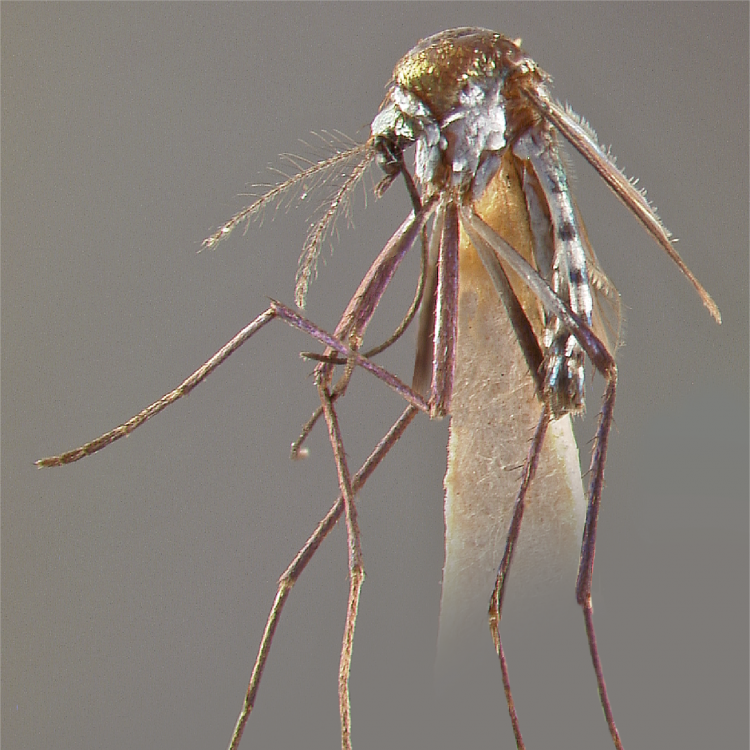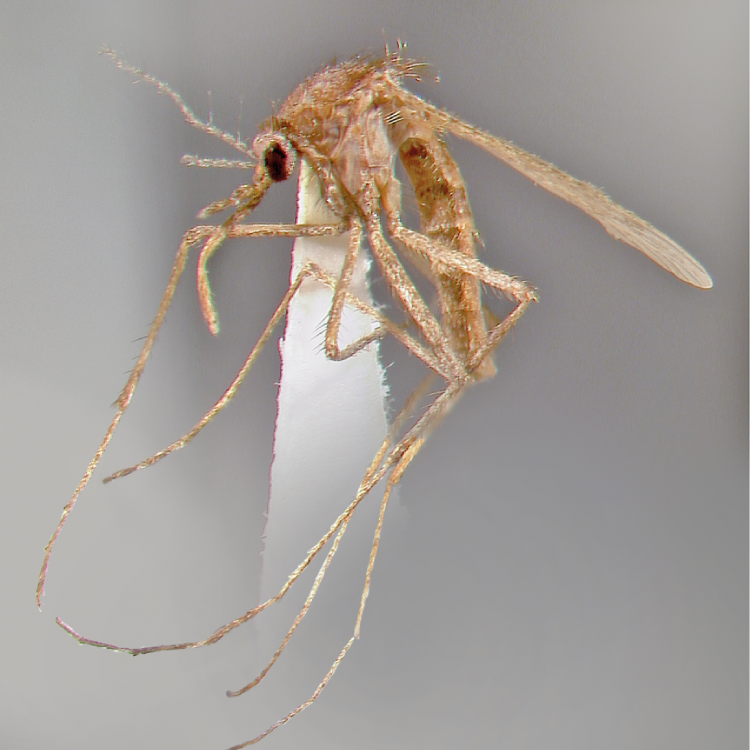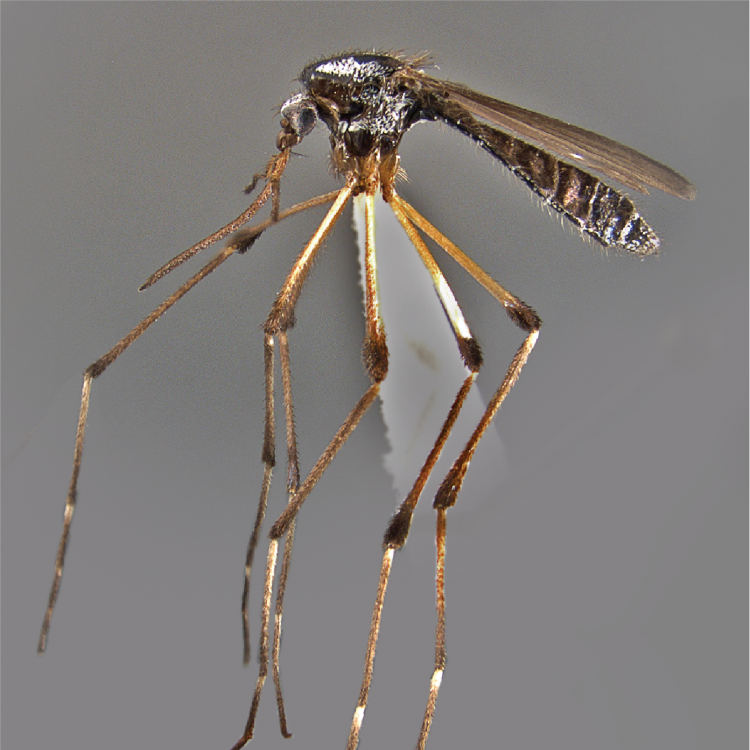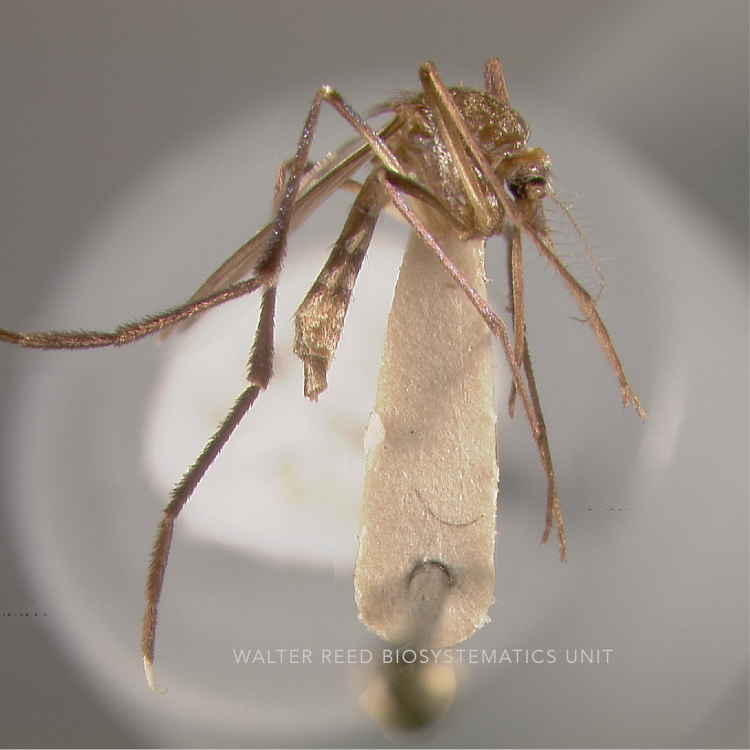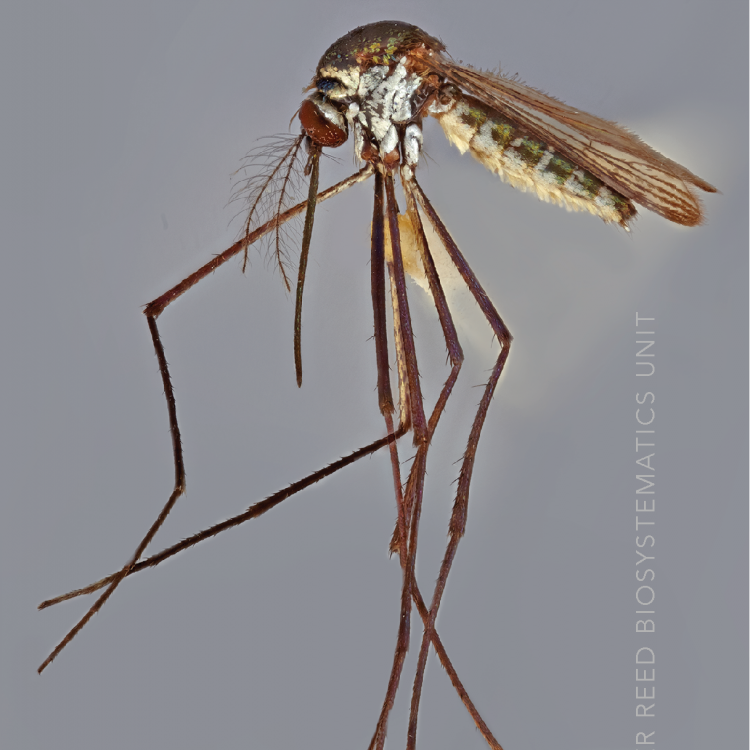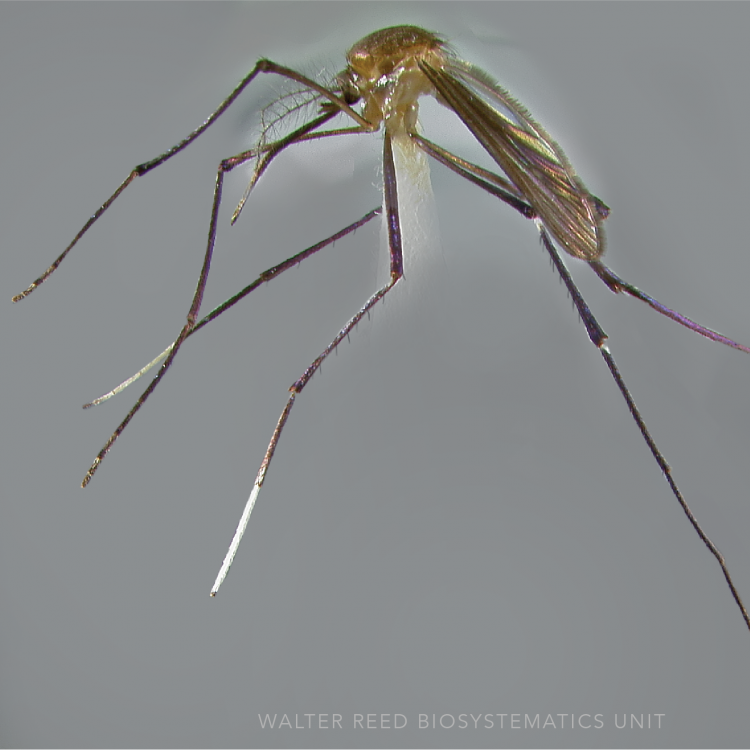AFROTROPICAL, ORIENTAL & PALEARCTIC REGION
Etymology: uniform appearance (L); refers to more uniform appearance compared to related species, i.e. no white thoracic spots.
Mansonia uniformis has a vast distribution, from sub-Saharan Africa through the mainland and islands of SE Asia, the Pacific islands, and across to northern Australia. Originally described from India, Ma. uniformis is exceptionally common across in sub-Saharan Africa, where it is commonly collected with the Afrotropical species Ma. Africana (Theobald). Mating, without insemination, has been noted between these species in the laboratory. Wile crosses of African Ma. uniformis with populations from Malaysia and Sri Lanka are fully viable, crosses between the African and Australasian populations showed marked reduction in egg viability. These findings, along with our as yet unpublished DNA barcoding results, support cryptic speciation within Ma. uniformis across its range.
Type locality: Quillon, Travancore, India
Type depository: Natural History Museum, London, England, United Kingdom (NHMUK)
DIAGNOSTIC CHARACTERS (Click photos to view; mouse over and click large photo to zoom in.)
ADULT (illustrated): Head: Palpus with apical yellowish scales. Thorax: Postpronotum with narrow curved scales; coxae C-I–III not contrasting with pleuron or scutum; scutum with pair of longitudinal greenish stripes, without well-defined round spots. Abdomen: III–VII-S mostly pale-scaled; VIII-Te with strong chitinized hooks. Legs: Fe-III with approximately five bands of pale scales; Ta-III1–5 pale bands complete posteriorly. Wing: Wing scales broad and asymmetrical, mixed dark and pale.
LARVA (not illustrated): Head: Antenna with dark rings at base and at origin of antennal shaft. Abdominal segments: Seta 6-III,IV single. Terminal segments: Seta 3-VIII double; two robust blunt comb scales; saddle <2 x as long as wide; modified spiracular apparatus for piercing plants.
TAXONOMIC KEYS
da Cunha Ramos & Ribeiro 1975
Lee et al. 1988b
Darsie & Pradhan 1990
Jupp 1996
Rattanarithikul et al. 2006a
Becker et al. 2010
![]()
WRBU – Mansonia – Australasian Region – Larva
![]()
WRBU – Mansonia – Indomalayan Region – Adult
![]()
WRBU – Mansonia – Indomalayan Region – Larva
![]()
WRBU – Mansonia – Oriental Region – Adult
![]()
WRBU – Mansonia – Oriental Region – Larva
![]()
WRBU – Mansonia – Afrotropical Region – Adult
![]()
WRBU – Mansonia – Afrotropical Region – Larva
Exemplar DNA sequences
Ma. uniformis COI: MK033254, MG712562–64, MF179284–85, KX816486–95
BIONOMICS
Immatures
Immatures use their modified siphons and trumpets to pierce the roots and stems of aquatic vegetation for respiration. They are common in large, unshaded swamps, and have readily adapted to rice fields, where they can dominate. In Kenya, Ma. uniformis seem unaffected by changes in water depth during the growing season and occur throughout the rice cycle. Adults are strong fliers, with individuals detected 1.5–3.5km away from their immature sites.
Adults
Female Ma. uniformis preferentially feeds outdoors on cattle with peak biting between 19:00–20:00, but the species frequently bites man and a wide variety of other primates. In Ethiopia, Ma. uniformis is the most common species in human bait collections, with peak populations coinciding with periods of high rainfall. Mansonia uniformis is species is multivoltine and population densities can increase rapidly. They look for their first blood meal within 24 hours of emergence, and oviposit within 3–5 days, afterwards immediately seeking another blood meal. It is a notable vector of several pathogens and viruses, and its importance is amplified by its high densities and close association with man.
DISTRIBUTION NOTES
Angola, Australia, Bangladesh, Benin, Botswana, Burkina Faso, Cambodia, Central African Republic, Comoros, Côte d'Ivoire, Ethiopia, Gabon, Gambia, Ghana, Guam, Hong Kong, India, Indonesia, Japan, Kenya, Liberia, Madagascar (includes Glorioso & Juan De Nova Is), Malawi, Malaysia, Mali, Mozambique, Myanmar, Nepal, Niger, Nigeria, Papua New Guinea, Pakistan, People's Republic of China, Philippines, Senegal, Sierra Leone, Solomon Islands, Somalia, South Africa, South Korea, Sri Lanka, Sudan & South Sudan, Taiwan, Tanzania, Thailand, Timor, Uganda, Vietnam, Zambia.

WRBU VECTOR HAZARD REPORTS
None; View other WRBU Vector Hazard Reports
Available GIS Models
IMPORTANT REFERENCES (full citations below)
Theobald 1901c: 180 (F; Panoplites)
Bancroft 1908: 52 (F)
Bohart & Ingram 1946b: 61 (M*, F, L*; bionomics, distribution, taxonomy)
Knight & Chamberlain 1948: 16 (P*)
Carter 1950: 14 (M*, F*, P*, L*, E*; bionomics)
LaCasse & Yamaguti 1950: 66 (M*, F*, P*, L*; bionomics, distribution, taxonomy)
Hara 1957: 50 (F*)
Laurence 1960: 491 (bionomics)
Wharton 1962: 24 (M*, F*, P*, L*)
Dobrotworsky 1965: 66 (M*, F*, L*)
Basio 1971b: 77 (M*; bionomics)
Mattingly 1971a: Pl. 4 (A wing*) Pl. 7 (M head*) Pl. 8 (P trumpet*) Pl. 26 (L terminal segments*)
Mattingly 1972a (E*; bionomics)
Baisas 1974: 139 (M, F, P, L; taxonomy, bionomics, distribution; Philippines)
da Cunha Ramos & Ribeiro 1975: 125 (taxonomy, bionomics, keys, distribution; Angola)
Tanaka et al. 1975c: 214 (distribution)
Brunhes 1977a (distribution; Comoros Island)
Tanaka et al. 1979: 116 (M*, F*, L*)
Ahmed 1987 (distribution; Bangladesh)
Lee et al. 1988b: 145 (F key, taxonomy, bionomics, distribution, review)
Darsie & Pradhan 1990 (F, L; taxonomy, keys, bionomics, distribution; Nepal)
Kohn 1990: 165 (distribution)
Iwaki & Choochote 1991 (E*)
Suleman et al. 1993 (distribution; Pakistan)
Jupp 1996 (M*, F*; key)
Whelan & Hapgood 2000 (bionomics, distribution; East Timor)
Rattanarithikul et al. 2006a (F*, L*; bionomics, distribution, keys)
Becker et al. 2010: 330 (F*, L*; key, taxonomy, distribution, bionomics)
CURRENT SYNONYMS
syn. reversus Theobald
1901c: 189 (F; as Panoplites africanus variety). Type locality: Zomba, Nyasaland [Malawi] (NHMUK).
syn. australiensis Giles
1902: 355 (F; Panoplites). Type locality: Burpengary, Queensland, Australia (NHMUK).
syn. marquesensis Dyar
1925e: 43 (M*). Type locality: Lorenco Marques, Mozambique (USNM).
CITED REFERENCES
Ahmed, T.U. (1987). Checklist of the mosquitoes of Bangladesh. Mosquito Systematics, 19(3), 187–200.
Baisas, F. E. (1974). The mosquito fauna of Subic Bay Naval Reservation, Republic of the Philippines. San Francisco: Headquarters, First Medical Service Wing (PACAF), San Francisco.
Bancroft, T. L. (1908). List of the mosquitoes of Queensland, with the original descriptions and notes on the life-history of a number. Annals of the Queensland Museum, 8, 1–64.
Basio, R. G. (1971b). The mosquito fauna of the Philippines (Diptera, Culicidae). Manila: National Museum of the Philippines. 198pp.
Becker, N., Petrić, D., Zgomba, M., Boase, C., Madon, M., Dahl, C., & Kaiser, A. (2010). Mosquitoes and their control (Second ed.). Berlin Heidelberg: Springer-Verlag.
Bohart, R.M., & Ingram, R.L. (1946b). Mosquitoes of Okinawa and islands in the Central Pacific. In United States NAVMED (Bureau of Medicine and Surgery, Navy Department) (pp. 110). Washington.
Brunhes, J. (1977a). Les moustiques de l'archipel des Comores I. Inventaire, repartition et description de quatre espèces ou sous-espécies nouvelles. Cahier ORSTOM. Série Entomologie Médicale et Parasitologie, 15(2), 131–152.
Carter, H.F. (1950). The genus Taeniorhynchus Lynch Arribalzaga (Diptera, Culicidae) with special reference to the bionomics and relation to disease of the species occurring in Ceylon. Ceylon Journal of Science (B), 24, 1–26.
da Cunha Ramos, H., & Ribeiro, H. (1975). Research on the mosquitoes of Angola (Diptera: Culicidae). IX - Genera Toxorhynchites Theo., 1901, Malaya Leicester, 1908, Ficalbia Theo., 1903, Coquillettidia Dyar, 1905, Mansonia Blanchard, 1901, Uranotaenia L. Arribalzaga, 1891, Aedeomyia Theo., 1901, Eretmapodites Theo., 1901 and Culiseta Felt, 1904. Anais do Instituto de Higiene e Medicina Tropical, 2(1–4), 111–141.
Darsie, R.F., Jr., & Pradhan, S.P. (1990). The mosquitoes of Nepal: Their identification, distribution and biology. Mosquito Systematics, 22(2), 69–130.
Dobrotworsky, N.V. (1965). The mosquitoes of Victoria (Diptera, Culicidae). London and New York.
Dyar, H.G. (1925e). The subgenera of Mansonia Blanchard (Diptera, Culicidae). Insecutor Inscitiae Menstruus, 13, 40–43.
Giles, G.M. (1902). A handbook of the gnats or mosquitoes giving the anatomy and life history of the Culicidae, together with descriptions of all species notices up to the present date. J. Bale, sons & Danielsson, Limited, London, 530pp.
Hara, J. (1957). Studies on the female terminalia of Japanese mosquitoes. Japanese Journal of Experimental Medicine, 27, 45–91.
Iwaki, M., & Choochote, W. (1991). Scanning electron microscopy of eggs of Mansonia uniformis, Ma. indiana, Ma. annulifera and Ma. annulata (Diptera: Culicidae). Journal of Medical Entomology, 28(3), 334–339.
Jupp, P.G. (1996). Mosquitoes of southern Africa. Culicinae and Toxorhynchitinae. Ekogilde Publishers, Hartebeespoort, South Africa, 156pp.
Knight, K.L., & Chamberlain, R.W. (1948). A new nomenclature for the chaetotaxy of the mosquito pupa, based on a comparative study of the genera (Diptera: Culicidae). Proceedings of the Helminthological Society of Washington, 15, 1–18.
Kohn, M. (1990). A survey on indoor resting mosquito species in Phnom Penh, Kampuchea. Folia Parasitologica (Ceske Budejovice), 37(2), 165–174.
La Casse, W.J., & Yamaguti, S. (1950). Mosquito fauna of Japan and Korea. Office of the Surgeon General, Headquarters, 8th Army, APO 343. United States. 207th Malaria Survey Detachment.
Laurence, B.R. (1960). The biology of two species of mosquito, Mansonia africana (Theobald) and Mansonia uniformis (Theobald), belonging to the subgenus Mansonioides Diptera, Culicidae). Bulletin of Entomological Research, 51, 491–517.
Lee, D.J., Hicks, M.M., Debenham, M.L., Griffiths, M., Bryan, J.H., & Marks, E.N. (1988b). The Culicidae of the Australasian region. Volume 9. Commonwealth Department of Health, School of Public Health and Tropical Medicine Monograph Series, 2.
Mattingly, P.F. (1971a). Contributions to the mosquito fauna of Southeast Asia. XII. Illustrated keys to the genera of mosquitoes (Diptera, Culicidae). Contributions of the American Entomological Institute, 7(4), 1–84.
Mattingly, P.F. (1972a). Mosquito Eggs XIX. Genus Mansonia (subgenus Mansonioides Theobald). Mosquito Systematics, 4(2), 50–59.
Rattanarithikul, R., Harrison, B.A., Panthusiri, P., Peyton, E.L., & Coleman, R.E. (2006a). Illustrated keys to the mosquitoes of Thailand. III. Genera Aedeomyia, Ficalbia, Mimomyia, Hodgesia, Coquillettidia, Mansonia, and Uranotaenia. Southeast Asian Journal of Tropical Medicine and Public Health, 85(Supplement 1), 1.
Suleman, M., Khan, K., & Khan, S. (1993). Ecology of mosquitoes in Peshawar Valley and adjoining areas: Species composition and relative abundance. Pakistan Journal of Zoology, 25(4), 321–328.
Tanaka, K., Mizusawa, K., & Saugstad, E.S. (1979). A revision of the adult and larval mosquitoes of Japan (including the Ryukyu Archipelago and Ogasawara Islands) and Korea (Diptera: Culicidae). Contributions of the American Entomological Institute, 16, 1–987.
Tanaka, K., Saugstad, E.S., & Mizusawa, K. (1975c). Mosquitoes of the Ryukyu Archipelago (Diptera: Culicidae). Mosquito Systematics, 7(3), 207–233.
Theobald, F.V. (1901c). A monograph of the Culicidae or mosquitoes (Vol. 2). London: British Museum (Natural History). with Atlas of 37 colored pls. + 5 pls. of photographs.
Theobald, F.V. (1901c). A monograph of the Culicidae or mosquitoes (Vol. 2). London: British Museum (Natural History). with Atlas of 37 colored pls. + 5 pls. of photographs.
Wharton, R. H. (1962). The biology of Mansonia mosquitoes in relation to the transmission of filariasis in Malaya. Bulletin of the Institute for Medical Research, Kuala Lumpur, Federation of Malaya, 11, 1–114.
Whelan, P., & Hapgood, G. (2000). A mosquito survey of Dili, East Timor, and implications for disease control. Arbovirus Research in Australia, 8, 405–416.
CITE THIS PAGE
Walter Reed Biosystematics Unit (Year). Mansonia uniformis species page. Walter Reed Biosystematics Unit Website, http://wrbu.si.edu/vectorspecies/mosquitoes/uniformis, accessed on [date (e.g. 03 February 2020) when you last viewed the site].

